













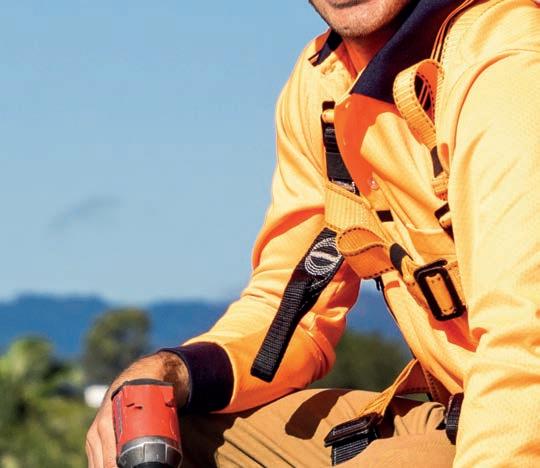






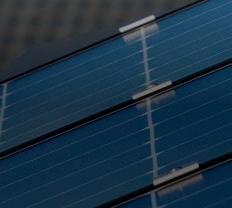
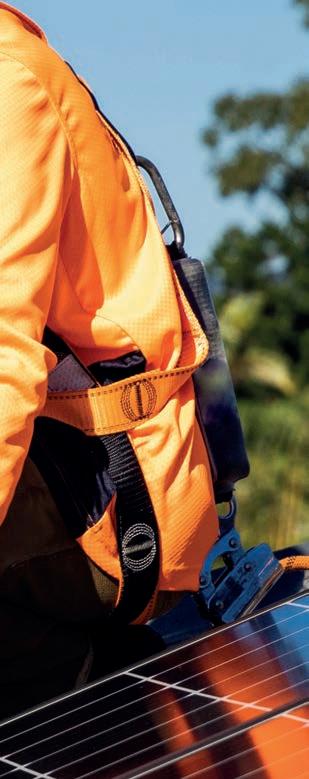




























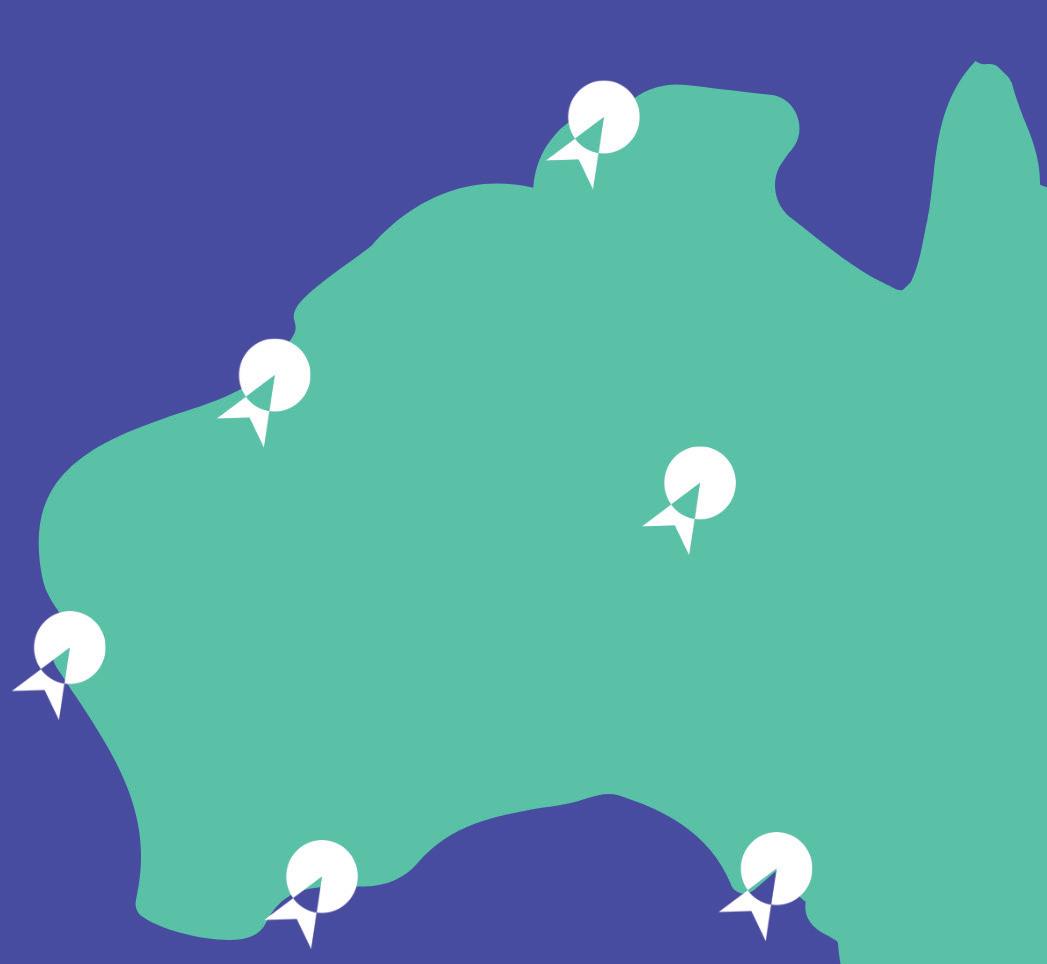


Field Service is in our DNA - 20+ years of solving in-field frustrations
SLA’s not ETA’s - We deliver to expectations, not estimated windows
From parts to full projects - We support all infield inventory needs
Inventory visibility in the palm of your hand - MOS is standalone or ERP connected

Scan the QR code to transform your in-field workforce.

Scan
Published by
Chairman
John Murphy
Chief Executive O cer Christine Clancy
Publisher Sarah Baker
Managing Editor Eugene Du y
Editor Tom Parker
Art Director Alejandro Molano
Designer Danielle Harris
National Media Executive Michael Ingram-Casha
Client Success Manager Louisa Stocks
Head O ce
Prime Creative Pty Ltd
379 Docklands Drive
Docklands VIC 3008 Australia P: (03) 9690 8766 info@primecreative.com.au www.primecreativemedia.com.au
Australia’s renewable energy transition has come into greater focus in recent months, with the Federal Government announcing its ambitions to achieve 62–70 per cent emissions reduction on 2005 levels by 2035.
This objective – a stepping stone to Australia’s ultimate goal of net zero by 2050 – can be achieved through five decarbonisation priorities. This includes adopting clean energy across the economy; lowering emissions through electrification and e ciency; expanding clean fuel use; accelerating new technologies; and scaling up net carbon removals.
In essence, Australia needs to continue on its current clean-energy path but do so in a faster and more streamlined manner.
The release of a renewed 2035 emissions reduction target came hot on the heels of Australia’s first national climate risk assessment (NCRA), published in mid-September.
The NCRA found that while we can no longer avoid climate impacts, every action made towards a goal of net zero by 2050 will help avoid the worst impacts on Australian communities and businesses.
The assessment confirmed Australians will continue to experience climate hazards – like floods, cyclones, heatwaves, droughts and bushfires – more frequently, more severely, and often at the same time.
The Federal Government simultaneously released Australia’s first National Adaption Plan, outlining the extensive adaption work already underway. This includes Australia’s first National Health and Climate Strategy and hundreds of infrastructure, emergency management and disaster resilience

projects funded through the $1 billion Disaster Ready Fund.
These announcements set the scene for an energy transition that is still materialising in new forms, industries and technologies, and serves even greater purpose for a platform of thought leadership and ideas sharing.
In this edition of Energy, we come at the energy transition from several angles, exploring the importance of nature preservation en route to net zero.
The Australian Conservation Foundation showcases three case studies that demonstrate how to adopt renewables while safeguarding threatened plants and animals.
The Australian Energy Council’s Tom Monaghan looks at a network trial aimed at making rooftop solar more inclusive, while we preview the upcoming All Energy exhibition and conference taking place in Melbourne from October 29–30.
This year’s event will take on a bold theme: Australia’s rising influence in the global energy transition.
Happy reading.
Tom Parker Editor

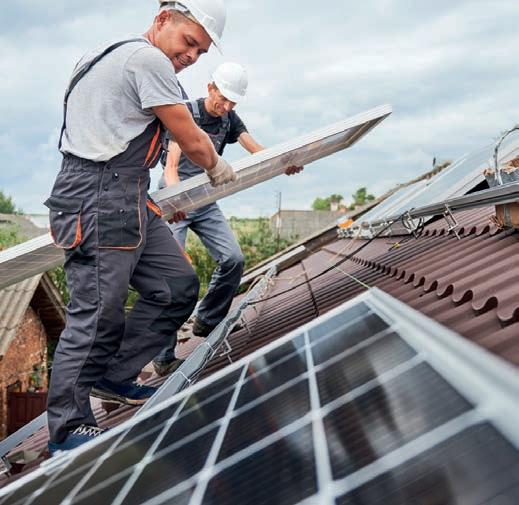







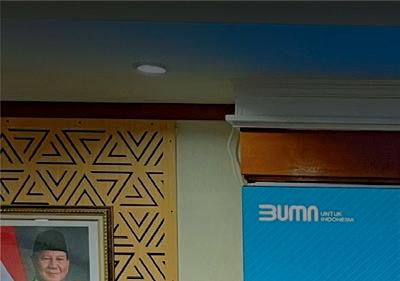



Dr Julio Braslavsky leads CSIRO’s engagement with Indonesia’s state-owned utility PLN. Indonesia faces similar challenges caused by phase imbalance in its local distribution networks.



Tomorrow’s energy system doesn’t just need to be renewable, it needs to be reliable too. CSIRO says smart inverters might hold the key to safely connecting more household solar, batteries and EV chargers.
Australia is leading the world in rooftop solar adoption. By June 2025, 4.2 million rooftop solar systems had been installed nationwide, representing 26.8GW of clean power generation capacity connected directly to local electricity networks that serve homes and businesses.
This surge in solar power and other consumer energy resources (CER) is helping reduce carbon emissions, but it’s also creating new challenges for electricity grid operators where assets that burn fossil fuels to generate electricity are being replaced by cleaner sustainable sources.
Dr Julio Braslavsky, Senior Principal Research Scientist at CSIRO, said one of the biggest challenges in local networks with high levels of solarpowered homes is the emergence of large ‘tidal’ swings in power flows
between power utilities and homes.
“In the evenings homes typically consume power, which flows from large power generation plants, such as wind farms, hydroelectric, coal and gas-fired power plants. Let’s call this the ‘low-tide’ time in local electricity grid operation,” he said.
“In the middle of a sunny day, however, today about 40 per cent of Australian homes generate their own power from rooftop solar panels. When the rooftop solar generation exceeds the power consumption in the houses, the excess power is ‘exported’, flowing back to the grid, supplying other homes and beyond. Let’s call this the ‘high-tide’ time in local electricity grid operation.”
Since Australia leads the world in rooftop solar installations, such reversal in power flows between low and high ‘tides’ in Australian electricity grids can
be dramatic, pushing the operation of local electricity networks to their capacity limits – in South Australia the entire state electricity demand is often 100 per cent supplied solely by rooftop solar during ‘high-tide’ times.
Dr Braslavsky said the capacity of local networks to safely sustain such tidal swings in power is fundamentally constrained by a phenomenon technically known as ‘phase imbalance’.
“Phase imbalance is a normal characteristic of local network operation and represents the unevenness in powers flowing through the threephase utility poles and wires systems at any given point in time,” he said.
Phase imbalance arises during normal operation because most homes are connected to a single phase (one of three) and have di erent consumption/ generation patterns through the day.
The imbalance, however, is aggravated during the large tidal swings in power produced by lots of rooftop solar and can lead to increased ine ciencies, power quality problems and network congestion – think of it like a three-lane highway where one lane is jammed while the others are nearly empty. Severe phase imbalance can lead to potential safety issues.
To tackle the challenge of phase imbalance, researchers from CSIRO teamed up in 2023 with X, the innovation lab formerly known as Google X, through a project called Tapestry. Their aim was to investigate smart inverter technology to help balance grid operation in real time, mitigating the impacts of ‘tidal’ power swings, and expanding the capacity of the network to safely connect not only more rooftop solar, but also home batteries and charging of electric vehicles.
Inverters are versatile electronic devices that convert the direct current (DC) electricity generated by solar panels into alternating current (AC) electricity used in homes and on the grid. But modern inverters can do much more than just convert power – they can also help manage how electricity flows through the network.
“Stemming from the foundational collaboration with X, CSIRO moved to developing and testing innovative designs of smart grid inverters that can tackle phase imbalance in real time and increase network utilisation in local electricity distribution networks,” Dr Braslavsky said.
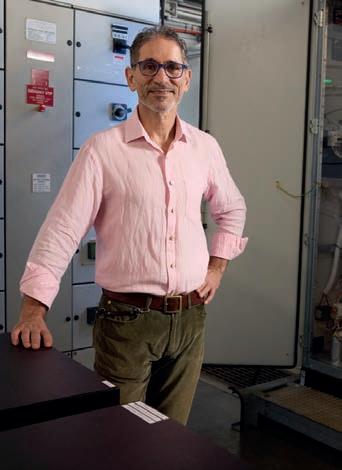

The potential of this innovation extends far beyond the Australian market, and in October 2024, CSIRO presented its smart inverter technology to Southeast Asian energy leaders, including Indonesia’s state-owned utility PLN. Indonesia faces similar challenges, with high ine ciencies, safety concerns and congestion issues caused by phase imbalance in its local distribution networks, and PLN expressed strong interest in collaborating with CSIRO to develop and test a prototype inverter that could help unlock more capacity for rooftop solar and other CER.
“Through its development initiatives in Southeast Asia, Australia’s Department of Foreign A airs and Trade is funding a CSIRO-PLN partnership that aims to demonstrate how smart inverters can reduce congestion, improve infrastructure e ciency and support electricity decarbonisation,” Dr Braslavsky said.
The joint project involves designing and testing a solid-state inverter that can dynamically rebalance electricity flows, then simulating performance using real-world data from Indonesian and Australian networks. The project team also conducted workshops and lab visits to share knowledge and refine the technology, and are exploring field trials to validate the inverter in live network conditions.
To make sure these smart inverters work as intended, the team is developing detailed computer models and running lab tests.
These models simulate how the inverters behave in real-world conditions, including how they respond to uneven solar generation or sudden changes in demand.
A particularly exciting result from the simulations shows the potential of simplified inverter architectures to reduce phase imbalance by supplying corrective currents.
This opens the door to coste ective solutions that could be deployed widely across the grid.
What’s next?
The team has already completed low-power lab tests and is preparing for high-power trials at CSIRO’s Energy Centre in Newcastle. The next phase includes real-time hardware-inthe-loop testing using Indonesian network scenarios, followed by a joint technical report and potential field demonstrations.
If successful, this innovation could help Australia and Indonesia integrate more rooftop solar without compromising reliability.
By 2050, rooftop solar capacity in Australia is expected to reach 72GW, with nearly 80 per cent of detached homes in the National Electricity Market having solar panels (doubling current levels).
Smart inverters like the ones being developed in this project will be essential to making that future work.
For more information, visit csiro.au/energy

Despite some aging infrastructure and a high rate of retirements expected over the next decade, the key energy market operator has highlighted a healthy pipeline of investment in new generation over the next ten years to meet demand. But delivery will be critical.
The Australian Energy Market Operator’s (AEMO) 2025 Electricity Statement of Opportunities report takes a detailed look at the ten-year outlook on the investments needed to maintain reliability in the energy market.
Despite the rapid changes taking place in both the system and consumption, this year’s report has highlighted a positive outlook.
Some of the key factors it assessed to accurately to forecast this demand are changes in storage, generation and consumption. This includes the widespread uptake of rooftop solar, a transition to EVs, industry electrification and rising data centre power use.
But equally significant was the retirement of aging and fossil fuelbased infrastructure with the AEMO taking into account a collective drop in generation of 11 GW from predominantly coal-powered stations that owners have informed the AEMO they intend to retire.
Balancing this drop and contributing to the positive outlook over last year, are 10 gigawatts (GW) of additional projects that now meet AEMO’s committed and anticipated criteria, including 2.9 GW/7 gigawatt hours of utility storage, 4 GW of grid-scale solar and 3 GW of wind.
At the same time over the studied period, electricity consumption is forecast to increase 28 per cent from 178 terawatt hours (TWh) to 229 TWh, driven by the rapid expansion of data centres, as well as the broader inclusion of prospective industrial load and business electrification.
But the report highlights the risks to reliability can be mitigated by the timely delivery of new generation, storage and transmission developments, supported by government-led investment programs and coordinated CER.
Identifying opportunities
The ESOO is produced to identify these investment opportunities for market participants, investors and governments, so they in turn can maintain a reliable supply of electricity in the National Electricity Market (NEM).
This year’s report assesses reliability against two development outlooks: the Government Schemes and Actionable Developments , and Committed and Anticipated Developments
The Government Schemes and Actionable Developments assessment reflects more than 50GW of new generation and storage capacity, including the Capacity Investment Scheme as agreed through

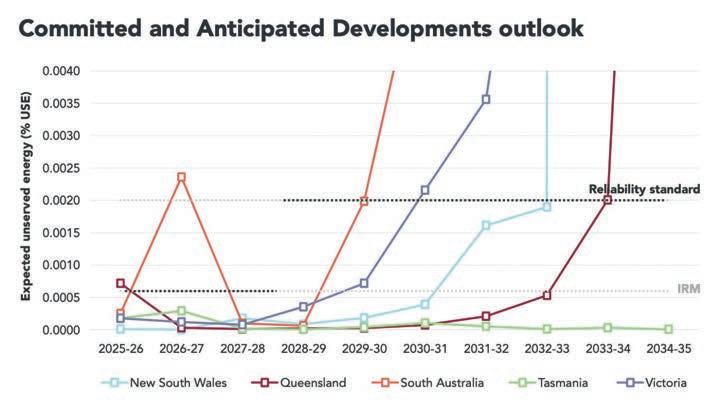
renewable energy transformation agreements with the states, and state-based schemes, and actionable transmission developments.
The Committed and Anticipated Developments reliability assessment includes only those generation, storage and transmission projects that are su ciently advanced to meet AEMO’s committed or anticipated criteria.
The report’s improved reliability outlook is based on all expected investments being delivered on time and in full.
The decade to come
AEMO CEO Daniel Westerman said that delivery of projects in the investment pipeline – generation, storage, transmission and enablement of consumer energy resources – are likely to meet reliability standards for the coming decade.
“The ten-year investment pipeline to manage energy reliability is healthy,” Mr Westerman said.
“Considering the large volume of generation retirements over the next decade, the timely delivery of new generation, storage and transmission, along with the operation of consumer energy resources to support reliability, remain critical.”
AEMO’s latest forecasts show a 28 per cent increase in operational electricity consumption (demand met by grid-scale generation) from 178TWh in 2024–25 to around 229TWh by 2034–35.
Last financial year saw a record 4.4GW of new generation and storage commissioned. Over the next five years, additional investment of between 5.2GW to 10.1GW is expected to come online annually, often supported by government schemes.
This new capacity will help o set the notified retirement of 11GW of predominantly coal power stations over the next ten years, including Eraring, Bayswater and Vales Point (New South Wales) Yallourn (Victoria) and Callide B (Queensland).
Potential reliability gaps
Under the broader Government Schemes and Actionable Developments assessment, a minor reliability gap is identified in South Australia in 2026–27 (25MW) when Torrens Island B is advised to retire and Project EnergyConnect (Stage 2) is not yet fully commissioned.
Considering only the Committed and Anticipated Developments assessment, a small reliability gap (80MW) is

forecast in Queensland in 2025–26 due to reduced generator availability, higher forecasts of maximum demand and delayed project commissioning. A reliability gap is forecast in South Australia in 2026–27 (39MW) when the Torrens Island B Power Station (800MW) is advised to retire.
This modelling did not consider AGL’s recent in-principle agreement with the South Australian Government to potentially extend Torrens Island B for two years. Should such an extension become formalised, no reliability gap would be forecast in these years.
Following the initial years of the tenyear outlook, reliability gaps are forecast in all mainland NEM regions, which have the potential to be managed as further projects progress towards meeting AEMO’s commitment criteria.
Due to the reliability gap identified in South Australia, AEMO will request the Australian Energy Regulator to consider an obligation on retailers and liable entities to enter su cient contracts through the retailer reliability obligation (RRO) for South Australia in 2026–27.
As part of AEMO’s summer preparations, it has a panel of providers to procure additional reserves when reliability is at risk across the NEM.
In addition to the investment requirements to ensure supply can meet demand in all periods of the year, the report models reliability impacts from planned generation outages, gas shortfalls and drought conditions.
It also acknowledges system security challenges, critical to successful power system operation. AEMO will publish its annual reporting on system security in December, which identifies investments required to maintain power system security.
The Climate Council’s energy expert, Joel Gilmore, said that AEMO’s latest report comes in the build-up to the Federal Government’s commitment to a national climate target for 2035 of a 60-70 per cent reduction in emissions.
“AEMO is very clear that Australia needs to keep this clean energy investment moving. A strong 2035 target will give business and industry a clear policy signal, driving further investment and building an even more reliable, clean energy grid,” he said.
“This report spells out that there is a strong stream of new investments in renewable energy in Australia. Committed projects alone ensure we will have a very reliable electricity grid until after 2030, and there is a huge pipeline of potential projects that set us up well for rapid cuts in climate pollution.
“AEMO expects Australian homes and businesses will continue installing rooftop solar and batteries under the government’s home battery scheme. This is a win-win for Australians’ back pockets and the grid: cutting climate pollution and power bills while contributing to system reliability and resilience.
“At the same time the report shows there is no reason for governments to extend the life of coal power stations that are planned to close in the next few years. With a growing pipeline of wind, solar and storage projects, we can reliably power our homes and businesses without polluting coal.”
Climate Councillor and energy expert, Greg Bourne, said, “The shift to clean, reliable energy is the big first step in slashing climate pollution to ensure a safer future for our kids and grandkids, and it’s heartening to see this report confirm that it’s well underway.
“We need to maintain this momentum in our electricity grid to ensure ongoing reliability as we electrify transport and industrial processes and bring on new large energy users including data centres. Coordinating rooftop solar, home batteries, and even the batteries in our electric cars is an important opportunity to both improve the reliability of our grid and ensure Australian households benefit directly from the shift.
“Cutting back on coal is clearly doable and the faster we shift to clean energy the more benefits flow to businesses and communities. Governments at all levels must continue to stimulate the investment required to fast-track the renewables rollout – including providing certainty by setting a strong 2035 climate target.”
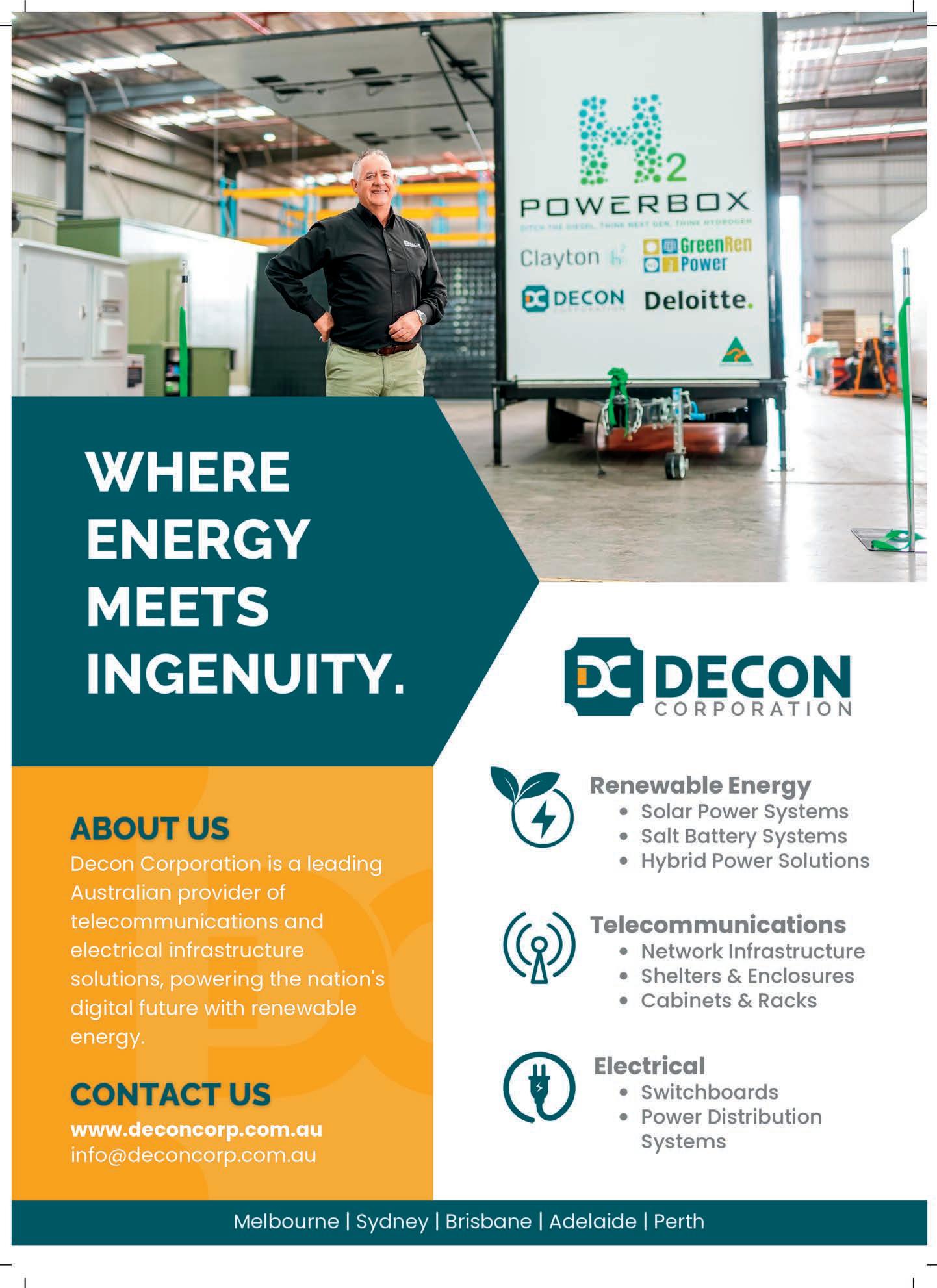


Smart mapping and strong policies can accelerate renewable energy adoption while protecting Australia’s threatened species.
For Australia’s net zero goals to be achieved, it’s not just a matter of deploying renewable energy en masse, it must also be mobilised strategically.
The Mapping Renewables for Nature report, a collaboration between the Australian Conservation Foundation (ACF) and researchers from the University of Melbourne, has found that renewable energy projects must be carried out in alignment with people and nature.
The e ect clean energy adoption has on flora and fauna is particularly in focus, with the report detailing the importance of good siting – i.e. the process of selecting and planning the location of renewable energy projects – and smart mapping in optimising the rollout.
With the Federal Government recently announcing a renewed target of achieving 62–70 per cent emissions reduction below 2005 figures by 2035, the report said nature mustn’t be left behind.
And there are examples where it already is.
“Australia has the highest mammal extinction rate in the world,” the report said. “Over 2200 species are now listed as threatened, including koalas, wombats, parrots, cockatoos, gliders, wallabies, frogs and fish.
“Our broken nature laws need to be fixed … Uncertain and unpredictable assessment and decision-making under the (Environment Protection and Biodiversity Conservation [EPBC]) Act has failed nature and slowed the shift to renewable energy.”
The report acknowledged the fact that the EPBC Act – Australia’s national environmental law – was being rewritten, with reform to be tabled in Parliament before the end of 2025.
“The Albanese Government has a once-in-a-generation opportunity to fix our nature laws and tackle Australia’s joint climate and nature crises,” the report said.
“Better data and smart mapping combined with clear environmental standards, integrated regional planning and independent decision-making will
accelerate the rollout of renewables in the right places.”
Mapping Renewables for Nature uses three case studies located in Gippsland, Victoria; Central West Orana, New South Wales; and the Banana Shire, Queensland, to demonstrate the benefits renewables can deliver for regional Australians while safeguarding threatened plants and animals.
Gippsland opportunities
Gippsland, a region known for its coal-fired power plants, has existing infrastructure on its side.
“By locating new wind generation near existing powerlines, planners reduce the need for new lines and (can) repurpose legacy coal assets for clean energy,” the report said.
“The zone already avoids high-value farmland, biodiversity hotspots, and densely populated areas, reflecting community feedback and ecological priorities.”
Gippsland is already paving a sustainable path for renewable energy
adoption, but more can be done.
The proposed Gippsland Shoreline renewable energy zone (REZ), the report said, must find the win–win spots with the highest wind capacity and least biodiversity.
“The draft Gippsland onshore zone has less land and less threatened plants and animals than our other study areas,” the report said.
“By avoiding 30 per cent of land with the highest biodiversity in the study area, an average of 73 per cent of the habitat for threatened plant and animal species can be safeguarded.
“Careful micro-siting and appropriate mitigation would help to reduce any remaining impacts.”
The Gippsland region can produce 13,000 gigawatt-hours (GWh) of electricity per year – powering 2.3 million homes –by value-adding 1.5 per cent of the REZ with renewables.
Combining solar and agriculture
The Central West Orana region, which envelopes NSW towns such as Dubbo and Mudgee and spans more than two million hectares, is leveraging agrisolar as
a renewable energy option.
Agrisolar involves the dual-use of land for solar energy production and agricultural activities, with solar panels providing shelter for livestock during extreme weather, while reducing heat stress and limiting water evaporation from the soil.
The report used the example of farmer Tony Inder, who now saves around $450,000 per year in mowing costs by introducing 5000 grazing merino sheep across two solar farms. The sheep benefit from shade and shelter, while Inder has enjoyed a 20 per cent uptick in wool yields.
The Central West Orana REZ must focus on protecting threatened species such as regent honeyeaters, swift parrots, koalas, and brush-tailed rock-wallabies.
“About 70 per cent of the zone has relatively low conflict with important habitat for threatened species, making it well suited for renewable energy,” the report said.
“By avoiding 30 per cent of land with the highest biodiversity in the
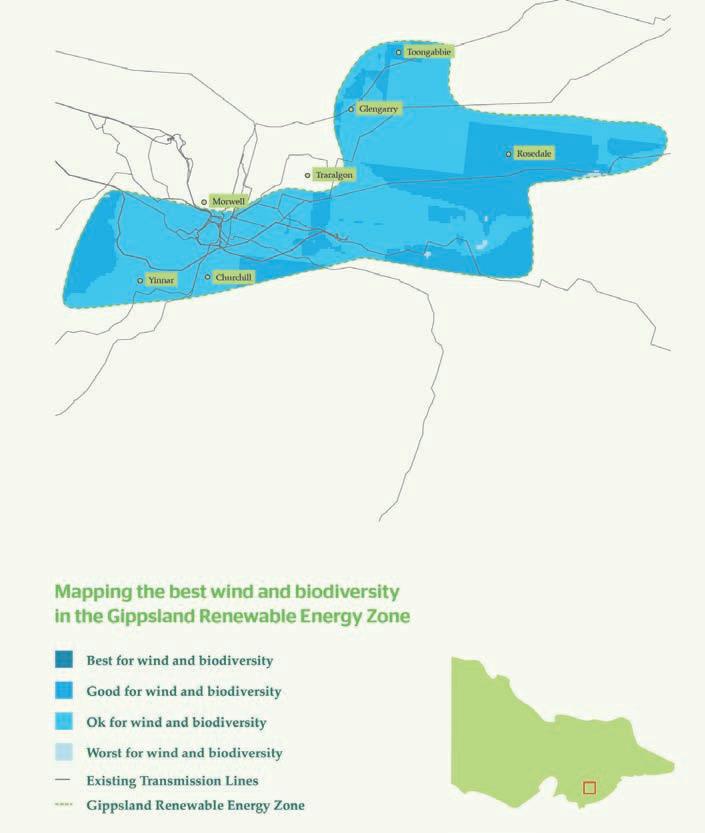
study area, an average of 93 per cent of the habitat for threatened plant and animal species can be safeguarded.”
The Central West Orana region can produce 17,000GWh of electricity per year – powering three million homes – by value-adding just 0.003 per cent of the REZ with renewables.
Less of the Banana Shire is suitable to renewable energy (about 60 per cent) than the Gippsland and Central West Orana REZs, but there is plenty of potential to maximise this region.
While there is no formal REZ in place for the Banana Shire, the ACF sees this region as having great potential for renewable energy adoption while avoiding threatened plants and animals such as brigalow forests, black box woodlands, southern snapping turtles and painted honeyeaters.
Local councils and regional communities have identified an 930km renewable energy corridor through central and western Queensland. This initiative, which runs through the Banana Shire, involves the construction of a new transmission network running south from Hughenden to Barcaldine and then east to Biloela.
The ACF said this project showed “how regional communities can shape renewable energy infrastructure placement” while ensuring “benefits are demonstrated and delivered for people and nature”.
The Banana Shire has access to good wind, sun, geography, and existing powerlines linked to coal mining and power generation industries.
“By avoiding 30 per cent of land with the highest biodiversity in the study area, an average of 90 per cent of the habitat for threatened plant and animal species can be safeguarded,” the report said.
The Banana Shire can produce 15,600GWh of electricity per year –powering 2.74 million homes – by valueadding 0.004 per cent of the study area with renewables. This could see farmers and landholders receive $28 million in direct payments each year.
These case studies highlight the opportunities, however the ACF said more needs to be done from government, industry and communities to ensure the protection of flora and
fauna while the clean energy transition ramps up.
The task for the Federal Government is to deliver strengthened nature protection laws, regional planning, and the development of an independent Environment Protection Agency (which it has promised as part of upcoming EPBC reform).
The Federal Government can also commit funding to smart mapping, which is where industry comes in.
“Industry should use smart biodiversity mapping tools … to identify locations for renewable energy that avoid the critical habitat of threatened species,” the report said.
“They should also set nature protection and restoration goals and targets that align with Australia’s 30 by 30 plan and the Global Biodiversity Framework (GBF).”
The Federal Government’s 30 by 30 target involves conserving 30 per cent of Australia’s landmass and 30 per cent of Australia’s marine areas by 2030, while the GBF was implemented in December 2022 to guide international action on biodiversity conservation.
As one of 17 countries in the world described as ‘mega diverse’ (known for having a high number of species), Australia was actively engaged in the development of the GBF.
The ACF said communities also have a key role to play in preserving biodiversity during the clean energy transition, by showing support for appropriately sited renewable projects, and by challenging misinformation

campaigns targeting climate action.

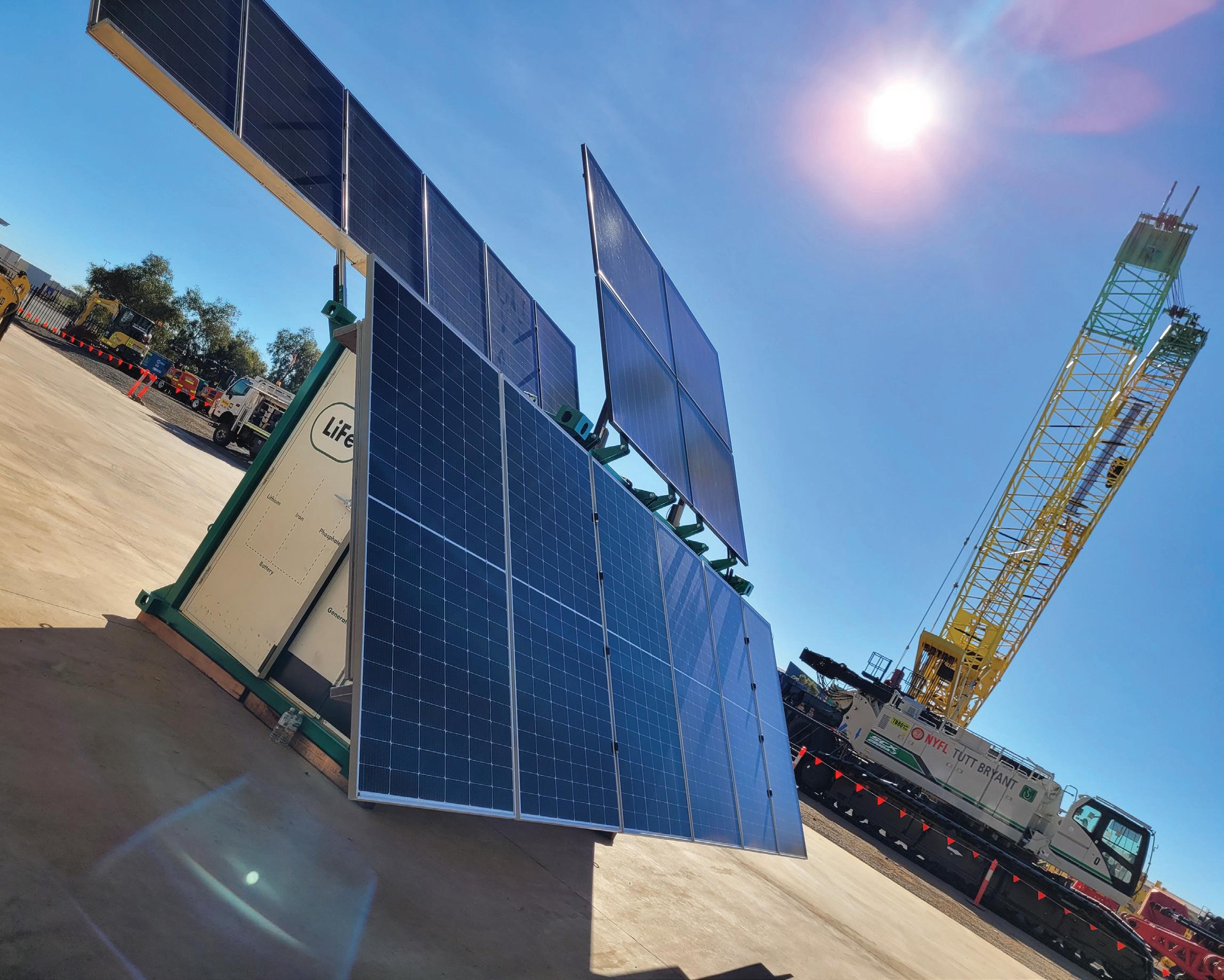
The renewable energy transition has the potential to boost Australia’s economy by almost $89 billion while creating nearly 400,000 jobs by 2040. These benefits can only be fully achieved, the ACF attests, by protecting nature.
“We know how to get this right,” the report said. “With smart tools, strong laws, industry action and community leadership, we can build an energy future that restores, retains and repairs what we love most.
“Australia can lead the world in showing how climate action, nature protection and community empowerment go hand in hand.”
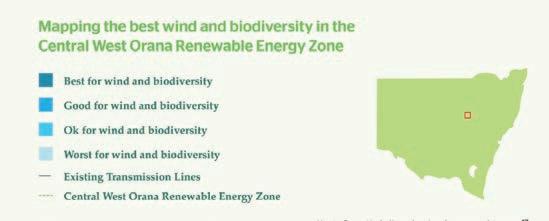







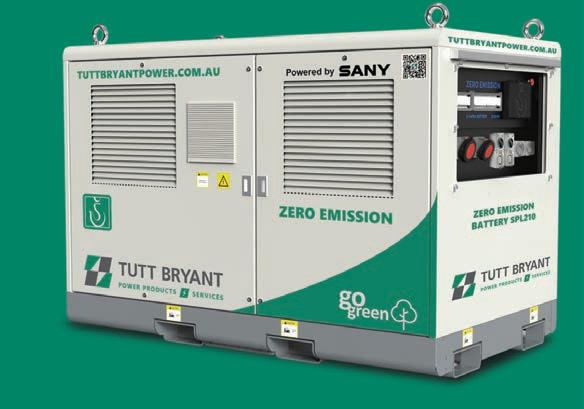






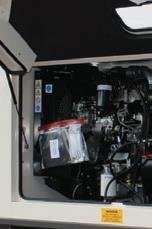





658 888 | powergen@tuttbryant.com.au



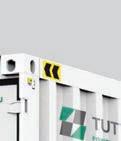

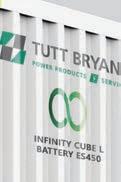






Whether you’re powering remote equipment or integrating renewables for your project, Tutt Bryant Power Products & Services delivers high-performance diesel, electric, or hybrid energy solutions.
OUR PRODUCT RANGE:
•Battery Energy Storage Systems (BESS) by Sany and Infinity Cube
•Renewable & Hybrid Energy Systems (LiFePO4D)
•AJ Power Stage V Diesel Generators with a 94% reduction in HC and NOx, with a 97% reduction in PM
Engineered for reliability. Built for Australia.




Decon Corporation is focused on developing a safer energy alternative with sodium metal chloride batteries.
As Australia pushes forward with renewable energy and storage infrastructure, safety remains at the core of every project.
The risks associated with conventional lithium-ion batteries are well known: fire hazards, thermal runaway and the costly suppression systems required to manage them.
Decon Corporation is leading the way with the use of alternative sodium metal chloride (SMC) batteries. This
technology not only removes those risks but reframes energy storage as a true long-term asset, not a shortterm consumable.
At their core, SMC batteries are simple in principle. They use common materials (salt and metal) combined in a way that allows energy to be stored and released when needed. The batteries operate at a controlled warm temperature, which keeps the sodium inside in a liquid state.
When charging, energy is stored by separating the sodium from the metal chloride. When discharging, the two come back together and the stored energy is released as electricity. A solid ceramic barrier allows sodium ions to move across safely, keeping the process e cient and stable. Decon Corporation says that, unlike lithium-ion batteries, there are no flammable liquids involved, which makes the chemistry inherently dependable.
From a performance perspective, SMC batteries deliver a well-balanced set of characteristics that make them highly suitable for stationary and critical infrastructure applications. They operate e ciently within their elevated temperature range, maintaining strong round-trip e ciency while o ering a cycle life that extends over many hundreds to thousands of charge and discharge cycles.
In practice, this translates to more than 20 years of reliable service in real-world conditions. Once a unit has reached the end of its lifecycle, Decon Corporation says it can be fully refurbished to extend its lifespan even further. Another significant benefit is their very low self-discharge rate, ensuring that stored energy remains available even during long standby periods. Maintenance is virtually non-existent, with no coolant top-ups, venting systems or intensive monitoring required.
This combination of stability, longevity and low upkeep has profound implications for cost and reliability. Systems based on lithium-ion almost always require extensive fire detection, suppression and ventilation systems, along with the additional insurance and compliance costs that accompany them. By contrast, SMC systems avoid these requirements entirely. Decon Corporation says that this provides operators with peace of mind, not only because the technology is safe, but also because the financial and operational







overheads that typically accompany battery storage are removed.




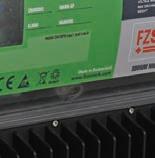


Traditionally, batteries are seen as consumables: expensive to acquire, prone to steady degradation and destined for replacement after a relatively short working life. SMC technology challenges this perception. With a lifespan that commonly exceeds 20 years, these batteries are more accurately described as long-term infrastructure assets. Their performance remains stable over time, with minimal capacity loss even after years of cycling.
This predictability allows organisations to plan with confidence





and avoid the disruption and expense of regular replacement programs. By removing the expectation of early obsolescence, Decon Corporation says that SMC batteries transform storage into a true capital investment that retains value across decades of service.
Decon Corporation has decades of experience delivering engineered solutions for Australia’s most critical industries. The company integrates SMC systems into tailored installations that meet the exacting demands of data centres, hospitals, utilities, telecommunications and remote communities.
Beyond the technology itself, Decon Corporation provides confi dence through nationwide coverage and continuous 24/7 remote monitoring, giving clients uninterrupted visibility, proactive support and immediate technical response across Australia.
Energy storage must be more than just powerful; it must be safe, reliable and cost-e ective across its lifetime. SMC batteries meet these requirements with ease. With Decon Corporation championing their deployment in Australia, organisations can invest with confidence in storage solutions that safeguard people, protect infrastructure and deliver value well into the future.
For more information, visit deconcorp.com.au
As Australia enters an infrastructure boom, the construction sector is playing its part in reaching net zero by 2050. But the benefits of powering worksites with renewable energy go far beyond sustainability targets.

To ensure optimal performance, e ective communications between a BESS and generator systems are crucial. Image: cerb/stock.adobe.com.
As the construction industry embraces more sustainable and e cient practices, the integration of renewable energy and battery energy storage systems (BESS) is becoming essential. These advanced systems enable construction sites to access clean, reliable, and cost-e ective power while reducing their environmental footprint.
In today’s fast-paced construction environment, uninterrupted power is critical to maintaining productivity and avoiding costly delays. Traditional energy sources such as diesel generators are not only ine cient but also major contributors to greenhouse gas emissions, as well as air and noise pollution.
BESS o ers a cleaner, quieter and more flexible alternative. When paired with renewable sources such as solar or wind, these systems store excess energy during periods of low demand or high generation and release it when energy needs peak. This ensures a consistent power supply, reduces fuel dependency, and lowers operational costs.
Additionally, modern BESS units integrate seamlessly with smart energy management systems, allowing construction managers to monitor usage in real time and optimise consumption.
Many construction projects are located in areas with limited or
unreliable grid access, such as remote regions or fast-developing urban zones. In these environments, BESS serves as a versatile power solution by charging from the grid during o -peak hours, when electricity is cheaper, and then storing that energy for use during peak demand.
This adaptability makes BESS a valuable asset for both temporary and long-term construction operations, and these systems can also act as a reliance source of back-up power, preventing unplanned downtime as a result of unexpected outages.
For projects in urban settings where regulations are stricter, BESS help reduce noise and emissions generated from construction sites, providing a better experience for both workers and the community.
Fuel for thought BESS play a key role in helping the construction sector achieve its sustainability goals. By facilitating the use of renewable energy sources and minimising reliance on fossil fuels, BESS contributes to lower greenhouse gas emissions and a smaller carbon footprint.
This helps the sector align with global e orts to combat climate change and supports compliance with green building certifications and environmental regulations. Adopting BESS also enhances a company’s reputation as a sustainability leader,
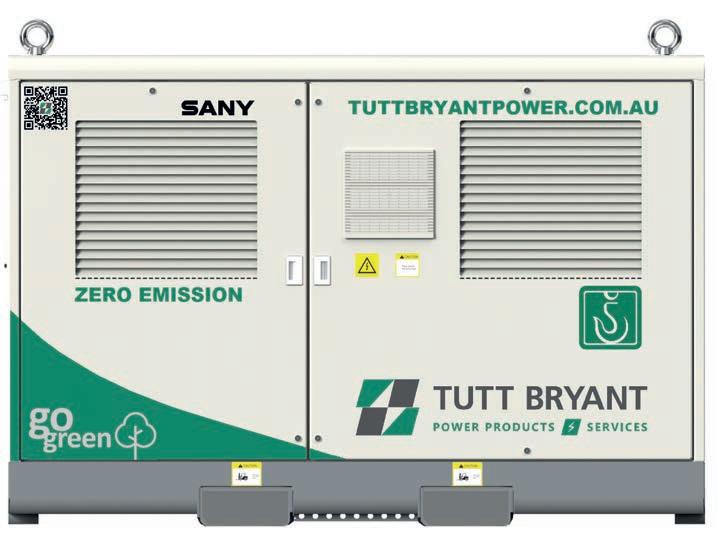
which can be a di erentiator when engaging environmentally conscious clients, investors and stakeholders.
But for worksites powered by diesel generators alone, it’s not just harder for them to meet their sustainability targets, they’re also constantly shelling out for expensive fuel. Grid-connected projects aren’t always friendlier on your hip pocket either, as they often require constant power during times when demand is at its peak.
However, integrating BESS into infrastructure projects allows construction firms to lower fuel consumption and take advantage of o -peak electricity rates when charging the system. BESS also typically require less routine maintenance than traditional generators, meaning that companies benefit from reduced ongoing maintenance and repair costs and over the course of a project – particularly long-term or largescale builds – these savings can accumulate substantially.
To tackle climate change and support Australia’s rapidly growing population, there’s an urgent pipeline of housing developments and critical infrastructure to deliver – and there’s absolutely no room for delays.
This means that a site’s operations need to be as e cient as possible. As energy demand fluctuates depending on the project’s phase, workforce size, and equipment usage, however, they run the risk of overloading traditional systems, leading to outages and, ultimately, more unnecessary downtime.
Modern BESS come equipped with smart energy management systems, enabling real-time monitoring and optimisation of energy consumption, empowering site managers to make data-driven decisions that improve overall energy performance.
As the construction industry evolves, BESS are becoming central to building sites that are not only productive and cost-e cient but also aligned with global sustainability goals, empowering construction firms as leaders in the transition to a greener future.
For more information, visit tuttbryantpower.com.au

ECG Engineering is helping mining companies integrate renewable energy systems that deliver reliable, cost-e ective power.
The Australian resources industry is becoming a harbinger of renewable energy adoption, as services companies increasingly provide accessible entry points for mining operators to decarbonise.
Founded on the goal of delivering high-quality, practical engineering solutions, ECG Engineering is strengthening its reputation in heavy industry circles.
The specialist electrical engineering consultancy intimately understands the mining landscape, and how to practicably integrate renewable energy solutions into intricate workflows. Its versatility and reputation for project delivery sees the company working with miners of all sizes.
This includes a lithium project in WA, whereby ECG has provided full electrical design and commissioning support for new substations and power distribution systems.
“We played a major part in the mine’s power system solution from pre-feasibility to commissioning,” ECG Engineering executive general manager Andy Gri n told Energy
“A key problem for this project was meeting its renewable energy target,
and ECG provided expert advice on how to achieve this utilising wind, solar and battery systems.”
ECG’s expert understanding of mining’s unique requirements, and the specific process plant demands that come with that, saw the consultancy optimise renewable integration without over-capitalising on wind or solar power.
“This ensured an optimal electricity cost, whilst keeping reliability to a high level and reducing the carbon footprint of the project,” Gri n said. “We continue to support this project to this day.”
ECG has provided energy solutions for Tier 1 nickel operations and diamond mines in Australia, to name a few, while the company has established a strong presence in Africa, recently opening a branch in South Africa to support its Tanzania o ce.
The company is an expert at mitigating risks from unreliable local power supply, including captive power plants and advanced technologies like battery storage to balance peak demand.
ECG has formed strong relationships with power station providers, enabling it to confidently oversee complex grid connections, ensuring compliance
with local regulations and seamless integration into mining operations.
The company was engaged by a major miner in Tanzania to oversee the integration of a five-megawatt battery energy storage system (BESS) at its gold operation.
The miner had been experiencing frequent unplanned grid outages due to its reliance on diesel generators for power across critical plant infrastructure, with the BESS solution providing a seamless source of back-up power.
ECG engineered the BESS to serve several roles, with the ability to operate in grid-following and -forming modes, respectively, to support normal grid operations, voltage disturbance events, and grid failures.
Importantly, the BESS enabled the miner to maintain plant operations during unforeseen grid outages.
This case study underlines ECG’s versatility and ability to tend to mining clients’ unique needs. The company understands the importance of maintaining power on-site and builds holistic solutions to ensure access to this critical resource isn’t, at any cost, lost.
Few companies globally o er the full scope of services ECG provides.

Competitors may deliver some electrical and instrumentation services, but don’t match ECG’s depth of expertise or integrated delivery capability.
ECG delivers power solutions across the full project lifecycle, from feasibility studies and detailed design to procurement, construction management, commissioning, and ongoing operational support.
Specialising in bespoke engineering, ECG provides customised power system studies, optimisation, and energy security planning tailored to the unique needs of each mine site.
“ECG was born out of supporting mining projects and operations, and we take that experience and expertise when approaching our design,” Gri n said. “We pride ourselves on the expert

advice we can provide to our clients, especially regarding integration of generation and renewable energy.”
With many mining companies globally increasingly decarbonising their operations, ECG has become a “go-to” provider to help miners navigate the energy revolution.
“Mining companies are increasingly recognising the economic and environmental benefits of renewables,” Gri n said. “With advancements in technology and growing pressure to decarbonise, we are seeing more hybrid energy systems, microgrids, and large-scale renewable deployments across the sector.
“ECG has developed a strong network with suppliers, contractors and power providers over the years. We see that building relationships in the industry is key to delivering good quality outcomes.”
To harness the opportunities that come with the energy transition, ECG said mining operators are “pushing the boundaries” to prove that emissions reduction targets can be achieved.
“Working with the WA lithium project, ECG was instrumental in delivering one of the highest o -grid renewable energy solutions for a mining project in Australia,” Gri n said.

“ECG has also been involved in large-scale renewable projects in Africa. This experience, and our relationships, translates to higher confidence in our client base that renewables are the way forward.
“This, in turn, is translating to higher uptake of renewables in the projects with which we are involved, which generates more exposure for our solutions and leads to more return work.
“We are in the foothills of the energy transition, and ECG is quickly becoming a pioneer of what future energy systems look like and how they can be practicably integrated.”
As ECG blazes a trail for other renewable aspirants to follow, the company isn’t sitting still, making strategic technology investments and bringing in more expertise to position itself for future growth.
“We’ve invested heavily in software to analyse renewables and power systems, and developed our own in-house tools specifically tailored to the specific industries and projects we’re involved in,” Gri n said.
“We’re recruiting more renewables experts and establishing more domain expertise as we support our clients through the energy transition.”
Starting o as a small group in Canning Vale ten years ago, ECG has, with now over 170 sta to its name, become a global company.
But, despite its growing size, ECG hasn’t lost sight of what’s most important – client support.
“We’re never afraid of taking on challenging projects, working with clients to understand their operations back-to-front before designing a solution that works best for them,” Gri n said.
“We hope to continue our development and growth, positioning ourselves for the expanding renewable investment that will continue for years to come.”

Australia’s energy future depends on empowered consumers –from rooftop solar to smart homes – driving a cheaper, cleaner, resilient grid.
Words by Lotte Wol and Michael Dello-Iacovo, Energy Consumers Australia Executive Managers –Advocacy and Policy
Australian consumers are some of the most active participants in the global energy system. Rooftop solar uptake in Australia has been rapid, supported by government subsidies, falling unit prices and a mature solar industry.
Three times as many Australian homes now have solar panels on their roofs as a pool in their backyard.
Energy Consumers Australia’s (ECA) most recent Consumer Energy Report Card – a survey of 4000 Australian households’ views on various energy-related issues –also shows that almost half of respondents who own a fully electric vehicle purchased it in the last 12 months.
Participation is growing and that’s great news. We will need consumers to play a bigger role in helping meet Australia’s energy needs.
The Integrated System Plan (ISP), AEMO’s primary tool for system planning, shows that rooftop solar capacity is modelled to increase fourfold between now and 2050. In that same period, coordinated consumer battery storage capacity is forecast to increase 168 times.
Luckily for Australians, the evidence shows that consumer resources are often the least-cost and most e cient way to meet our energy needs. Consumer resources are proximate to energy use, and thus more e cient. They can be less costly to build than utility-scale infrastructure, which faces barriers in planning and social licence.
Owning these resources can deliver large savings for consumers. ECA’s
research with CSIRO found that, by the end of this decade, the average e cient, electric household saves more than $2000 annually compared to their neighbour relying on fossil fuels to keep their house and car running.
Research from Rewiring Australia, ClimateWorks, IEEFA and the Grattan Institute demonstrate similar savings.
Importantly, consumer resources deliver savings for both those consumers who own them and their neighbours who do not or cannot. For example, increasing the use of electric vehicles creates surprising benefits for all energy consumers. ECA’s research shows that because EVs help us use the existing grid more e ciently, they save all other electricity consumers money — more than $100 per year today and $500 per year by 2050. This is also being observed overseas, such as in California.
Despite the clear benefits – and importance – of encouraging consumer uptake of CER, though, Australia’s energy system continues to favour largescale generation. Historically, large-scale generation through coal and gas has dominated an energy system that delivered energy to passive consumers. This bias permeates today in the way we plan for and invest in the energy transition. For example, the ISP includes an annual study on the cost and scale of supply-side resources (GenCost) but does not have a demand-side equivalent. This isn’t just ine cient – it threatens the pace and a ordability of the energy transition. Consumer resources are inherently modular and can be built and scaled in alignment with market needs. By contrast, large-scale capacity’s “all-or-nothing” approach requires perfect foresight to right-size investment.
Ongoing reforms to the National Electricity Market (NEM) are moving the system in the right direction. The NEM Review recognises the role of CER and the importance of aggregation and visibility of resources to the market operator. Reforms to the Capacity Investment Scheme are exploring a role for aggregated CER. The ISP is broadening its assumptions and modelling to include demand-side factors. But much more is needed. Consumer resources can improve the e ciency of our energy system to provide the same – or better – energy service using less energy and less costly infrastructure. Instead of perceiving CER as a problem to be solved, it’s time to view it as a solution for reliability, supply and security. We must resolve the fundamental question of how we can improve our energy productivity to do more with less.
We can boldly identify targets for investment in consumer energy and then set out the policy framework to ensure we achieve them. Let us start with a target of rooftop solar on 80 per cent of detached Australian dwellings – as aligned to the assumption in the 2024 ISP’s Step Change scenario. The Federal Government has set targets for emissions reductions and to deliver more electricity from renewable sources. We should do the same for the consumer resources that help achieve those goals most cost-e ectively.

Targets provide policy certainty and work best when they make an organisation or sector responsible for achieving them.
We can make the most of technologies including household solar and batteries resources if we consider how they intersect with other upgrades. ECA’s research found significant savings for households from electrifying gas appliances and energy e ciency upgrades such as insulation.
Thermally e cient homes allow us to safely ‘pre-heat’ or ‘pre-cool’ in the middle of the day while solar is abundant. Batteries also go further in thermally e cient homes because those homes have lower heating loads, allowing stored energy to be used for longer in the evening.
Energy e ciency and smart energy use (e.g. demand response) should be front and centre when we are calculating costs for providing energy. We should allow and encourage those resources to compete against traditional resources (e.g. large-scale supply side) to ensure we end up at a least-cost system. We do not yet have the evidence to know the unit costs of demand-side resources in Australia.
Every household with a smart thermostat, pool pump, or EV charger should have simple ways to participate more actively in the energy system if they want to and be rewarded for shifting their energy

use when it benefits the system. Not everyone wants to actively trade energy, but everyone should have the option to say, “use my flexible devices when it helps the grid and pay me fairly for it”.
We can also look internationally for inspiration. California pays households for battery services during extreme events. Germany allows peer-to-peer energy trading. The UK has sophisticated local flexibility markets where households compete with traditional generators. We’re just at the start of the journey in Australia – and the solutions. For now, governments should set targets and continue making technologies like solar, batteries and other smart technologies accessible to all households. Consumers must have easy access to the right information, be given the chance to opt-out if necessary and be fairly rewarded for participating in any services that benefit the grid and other consumers. Getting this right will keep the costs down for everyone, ensure Australia can meet its net-zero targets and keeps the lights on to 2050.
For now, that increased role for consumers we mentioned from the ISP is just an assumption. To get there, we need the right incentives to empower consumers to make energy decisions that support their own savings and the system overall.

Widespread uptake of consumer energy resources will be key to meeting Australia’s decarbonisation goals, but how can we ensure this energy revolution leaves no one behind?

By 2030 Australia needs to reduce its carbon emissions to 43 per cent below 2005 levels, and by 2035, we need to cut those even further to 63–70 per cent. Currently, we’re sitting at 29 per cent, and the Federal Government has said that while these targets are ambitious, they’re very much achievable – and the weight of this challenge has fallen squarely on the energy sector’s shoulders.
Along with the announcement of the targets, the Federal Government shared a roadmap for how we’re going to achieve them. The very first priority in its Net Zero Plan is decarbonising the energy system, followed by increasing household and industrial electrification. This not only means that in five years Australia needs to take renewable energy from 40 per cent of total generation, to 83 per cent, but as we electrify, the grid also needs to be able to support this new demand.
According to the Net Zero Plan, Australia’s pathway to net zero emissions by 2050 involves a rapid deployment of firmed large scale clean electricity generation and transmission, but it also hinges on the installation of well-integrated consumer energy resources (CER). As Australia moves towards a decarbonised future, rooftop solar and household batteries will be essential to not only replace the capacity of retiring coal-fired power stations, but in empowering consumers to take ownership of their energy.
However, it’s also vital that the benefits of the future energy system are shared equally between all consumers, and the team at Fronius Australia said there’s much to be done, but they’re ready to play their part.
According to the Australian Energy Market Operator (AEMO), total
installed rooftop solar and other distributed solar capacity in the National Electricity Market (NEM) is required to reach more than 36GW by 2029–30 under its 2024 Integrated System Plan (ISP) Step Change
Scenario – which projects that rooftop and other distributed solar could contribute more than 20 per cent of total annual generation in the NEM.
Integrating CER into the electricity system is also an opportunity to support a cost-e ective and faster energy transition, system reliability, and lower energy bills for all consumers. In its Net Zero Plan, the Federal Government pledges to continue to drive investment in CER to reduce pressure on the grid, but what exactly is required to do that?
To date, around 8.5 per cent of all renewable energy generated in Australian households is powered by Fronius inverters, which means a lot of homes are already relying on Fronius technology to capture and manage their energy, often without even realising it.
This gives the team a unique perspective on how the residential sector is evolving, and what the next stage of self-su ciency could look like for households, and together with its customers, partners and society, Fronius is supporting households to take control of their energy future.
Collectively, rooftop solar is now the second largest source of renewable electricity generation in Australia. It equates to 25GW of installed capacity and accounted for 31 per cent of all renewable energy generated across the country in 2024. That year, an estimated 3.2GW of new rooftop solar PV capacity was installed across Australia, 17 with small-scale
solar contributing 32.5TWh, or 11.5 per cent, of total national electricity generation (an annual increase of 16 per cent). However, only a third of those installations during 2024 had a home battery attached.
According to the Clean Energy Council, solar saves an average family $1500 on their annual bill, and this almost doubles if you add a battery. But for everyone to reap the benefits there’s a big gap that needs to be addressed.
According to the Australian Bureau of Statistics (July 2025), there are approximately 11 million households in Australia, of those, four million already have a solar system installed – but at the end of December 2024 just 4.5 per cent had an accompanying home battery.
There are currently more than 400,000 Fronius inverters installed in Australia, totalling 3.2GW capacity. Of these, 56,000 are GEN24 inverters. With the UP.storage software upgrade, a GEN24 becomes a GEN24 Plus hybrid inverter, so customers can add a battery and, if required, enable full backup. This software path gives customers genuine flexibility in how they design their solar system. They can start with solar only, and if they decide to add a battery later, it’s as simple as a software update. Because their systems are battery ready from day one, it’s not only more cost-effective to upgrade later but it’s more sustainable too. In October 2025, Fronius also launched its own battery and now offers Australians a full ecosystem to support their electrification goals.
However, there’s more that needs to be done to ensure that no-one is left out of this renewable future.

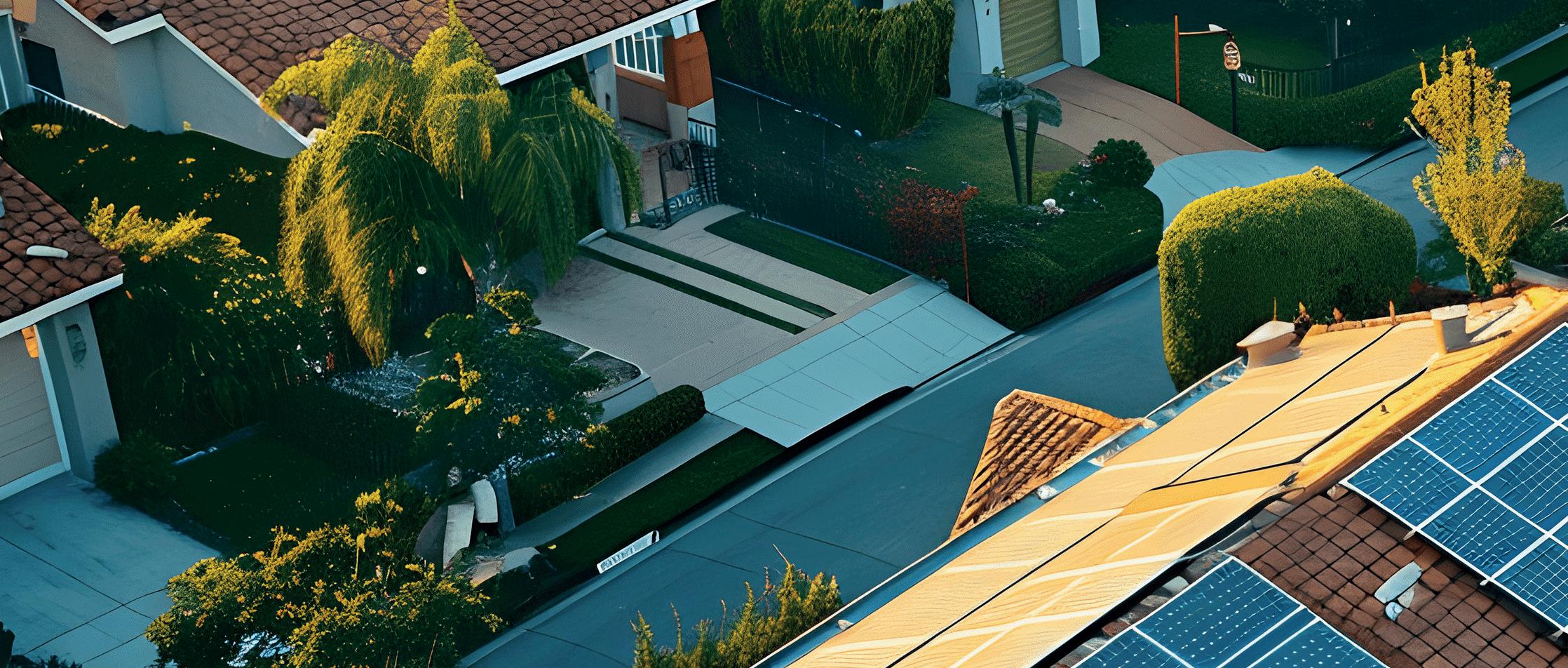


Data from Energy Consumers Australia (ECA) reports that around one-in-five households are vulnerable to, or experiencing, energy hardship – and most of them have very high energy bill. These vulnerable families have the most to gain from the savings provided by CER, but they’re also the most prohibited by the upfront cost of installation. Similarly, Australians who rent, or live in apartments don’t have the same capacity to install a solar system as those who own their own home.
To tackle this issue, the Federal Government’s Cheaper Home Batteries Program has helped Australian households install almost 30,000 batteries. Since the program commenced on 1 July 2025, and even before the Reserva battery was launched, Fronius has seen strong uptake of its products linked to this rebate, including more than 1000 GEN24 to GEN24 Plus upgrades. The Federal Government is also working with states and territories to provide financial support, including through the $100 million Community Solar Banks program, to provide shared solar for those who can’t install their own systems. These incentives are a lifeline for vulnerable Australians, however, in order to be eligible for this support, consumers need to ensure they’re choosing battery systems, inverters and components listed on the Clean Energy Council (CEC) approved product list, and some grants also require the system to demonstrate a payback period for the system and installation cost within a certain timeframe. Implementing a solar battery system is a major investment and consumers also need to be confident that their new solutions will stand the test of

time and can support their needs as technology evolves. Fronius’ 24 Hours of Sun vision and its experience in both technology and installer training give it unique insight into how residential self-sufficiency can be realised, and it’s the company’s goal to show Australia what’s possible if households are empowered with the right tools, knowledge, and support. These principles are at the heart of Fronius’ Energy Ecosystem, which is designed to offer households a complete, futureproof solution for clean energy, and give customers the confidence that they’re installing a system that works the way they need it to.
At its core are Fronius inverters, which can be upgraded from solaronly to battery-ready with a simple software update.
The new Fronius Reserva Battery stores excess energy for later use,
while Ohmpilot directs surplus solar into hot water, and Wattpilot smartly charges electric vehicles.
To truly empower customers to take control of their energy usage, the Fronius Smart Meter tracks energy flows in real-time, which Solar.web makes it easy to monitor and optimise performance. For added energy security, Fronius also offers blackout protection solutions that work with additional components to keep the power on when the grid goes down.
Fronius’ goal is simple: to the next generation with a world worth living in. For that we need a sustainable energy supply, and Fronius is standing ready to help every Australian to get started on this path and to contribute their part.
For more information, visit www.fronius.com/en-au/australia





The development of new energy projects across regional Australia will be critical to meet projected renewable targets. Academics Elianor Gerrard and Kimberley Crofts discuss how the path to approval and uptake could be made smoother in rural areas.



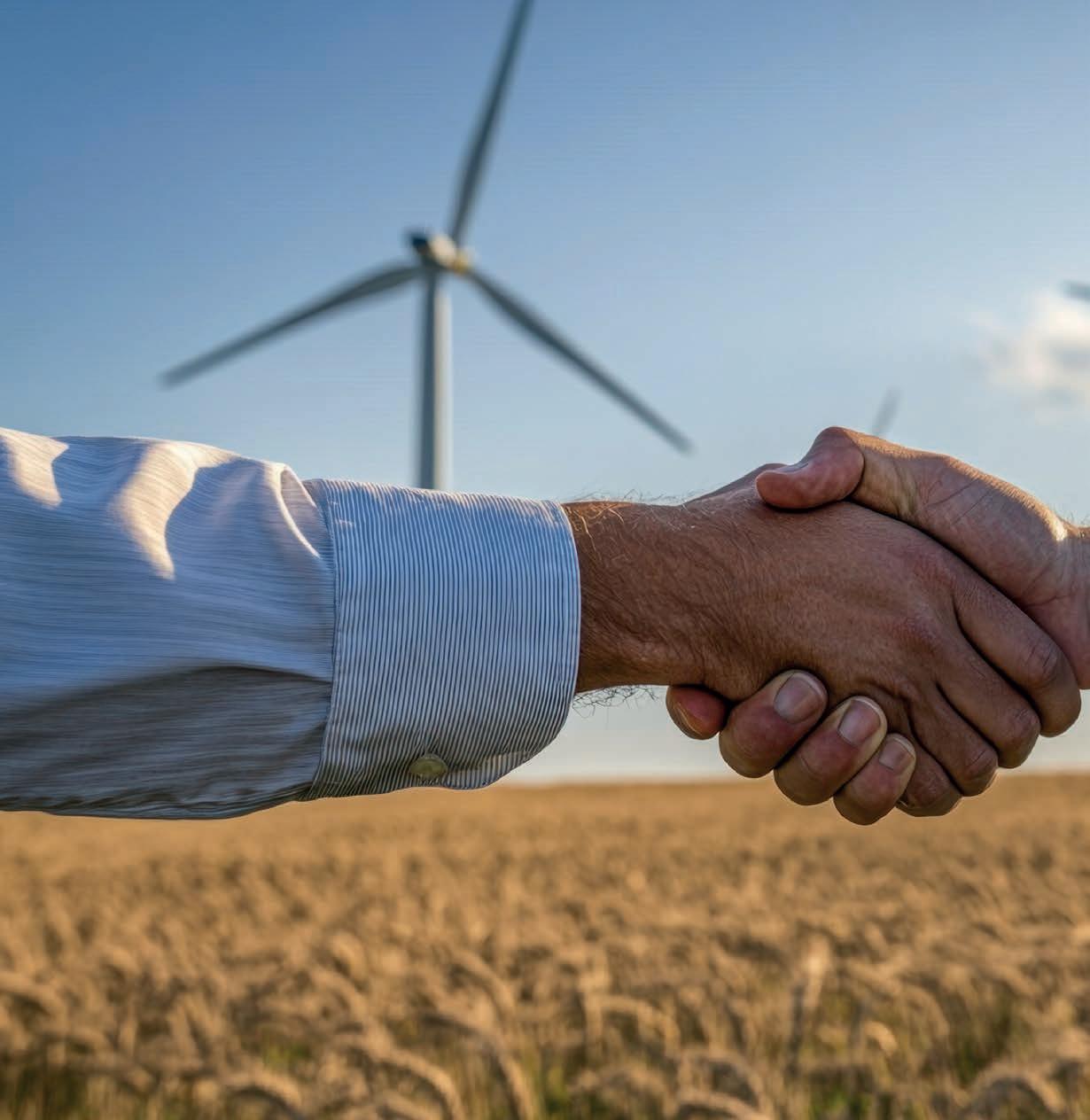
Words by Elianor Gerrard, Senior Research Consultant, Institute for Sustainable Futures, University of Technology Sydney and Kimberley Crofts, Postdoctoral Research Fellow in Energy Transitions, Deakin University
Reaching net-zero emissions in Australia relies on the bush. That’s where much of the land, sun, wind and freshwater resources lie.
But as the clean energy build accelerates, some landholders are pushing back. Unfortunately, their legitimate worries have been magnified by media coverage and vested interests.
The recent series of News Corp Australia Bush Summits promoted farming and mining while mining magnate Gina Rinehart took aim at the damage she claims renewables and the “net zero ideology” were doing to farmers already struggling with “devastating droughts, fires [and] floods”.
Clean energy – key to mitigating climate change – is growing rapidly, driven by projects in rural areas. In just five years, Australia has almost doubled how much clean energy goes into its main grid, reaching 40% this year.
The speed of the rollout has caused fractures in regional and rural areas as the “presumed benevolence” of renewable energy comes face-toface with the realities of large-scale infrastructure development. In Victoria, controversial new laws mandating access for transmission line builders





are likely to inflame relations with host landowners. The carrot of increased payments seems barely enough.
Farmers worry more and more about changes to the climate. Most quietly support renewables and many benefit directly from the reliable income of solar and wind. But rapid change can create real tensions, especially when change is seen as being done to a community, not with it.
What should be done? Policymakers, project developers and landowners should focus on finding ways of
equitably sharing the very real benefits of the clean energy transition with the communities who will host them.
The energy debate has long been polarised in Australia, characterised by outrage and negativity. Australia’s long-running “climate wars” gave rise to a decade of political instability and a succession of prime ministers.
Media coverage amplifies the sense of an intractable conflict between clean energy projects and the bush. In politics, energy and climate
policy continues to be weaponised in debates. The debate over the “net zero agenda” has fractured the Coalition.
Inflaming this debate is useful for those who benefit from delaying climate action as long as possible.
Mining magnate Gina Rinehart claimed renewables were hurting farmers at the Broome Bush Summit.
Farmers are already feeling the e ects of climate change. In a 2023 survey of Australian farmers, 92% reported experiencing unwelcome changes in seasons and climate in recent years, and 71% are spending money to cut emissions from their farms.
Asked to name the main threat they were facing, 55% chose climate change. Just 1% chose transmission lines and another 1% chose the renewable rollout.
“The bush” is often presented as an immovable bloc resistant to renewables, but this framing is simplistic. Farmers have long fought against coal and gas projects in fertile areas such as the Hunter Valley. And many farmers directly benefit from clean energy projects, quietly exploring ways of pairing renewables and transmission lines with farming.
In July, Bendigo hosted a national expo on renewables and agriculture. Farmers, researchers, policymakers and advocates discussed methods such as agrivoltaics, where sheep graze under solar panels.
This month, Farmers for Climate Action hosted a national summit exploring similar territory. At the conference, farmers spoke about how renewables were a financial lifeline amid challenging conditions.
Rural concerns should not be dismissed. Wind farms attract fears over noise and visual impact, and large transmission lines provoke concerns over potential impact on farming through to lower property values.
The best way forward? Ignore the noise, listen to genuine concerns, and focus on sharing benefits, clear communication and making decisions collaboratively. Here’s how:
Share the benefits
Renewable developers often initiate community benefit schemes such as funding community initiatives or
committing to local jobs. The Clean Energy Council estimates these schemes could be worth A$1.9 billion by 2050.
Renewable projects can help by leaving a legacy of infrastructure and programs to make life better in the bush. Shared equity schemes go even further. In Canada, communities get a mandatory 25% of project equity. In Australia, the First Nations Clean Energy Network is pushing for similar shared equity.
Decide together, share knowledge
Towns in designated renewable energy zones are getting in early to ensure the community has a bigger role through community meetings and discussion. Residents in Hay made it clear they wanted to ensure benefits would flow to their region.
Citizen assemblies can help create common ground in communities before conflict sets in.
Open discussion gives communities more power and more buy-in. Local knowledge and expertise can feed into related initiatives, such as encouraging biodiversity on solar farms.
Fill the information vacuum
When communities aren’t kept well informed, misinformation can flourish. Trust and transparency are key. Communication has to be early, twoway and ongoing. One solution may be local energy hubs, where sta can answer questions directly.
Share the load
Rural and regional areas are doing the heavy lifting on clean energy, as a NSW Parliamentary Inquiry recently heard. Urban areas can contribute through mechanisms such as the new urban renewable energy zone in the Illawarra, though these have their own complexities.
Community power networks o er another way for urban communities to shoulder some of the responsibility for the energy shift by producing, storing and using their own energy.
Through the increased electrification of homes – coupled with flexible demand and greater network utilisation – cities and urban areas could become “giant batteries.”
Polarisation is pointless
Change is not always easy. Anxieties can be magnified to create polarisation or gridlock. But issues can be worked through.
We need to put aside fearmongering and collaboratively decide how best to shape the emerging clean energy era to benefit all Australians – rural or otherwise.
This article first appeared on The Conversation.







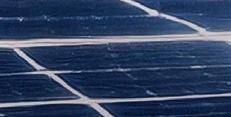














TheRooftop solar is not only a great Australian success story in the energy transition, it reflects people power. But is it open to everyone? The Australian Energy Council’s Tom Monaghan looks at a network trial aimed at making it more inclusive.

ustralia’s rooftop solar uptake has been a defining feature of the nation’s energy transition. With more than one in three households now generating their own electricity, Australia leads the world in rooftop solar. However, access remains uneven. Renters, apartment dwellers and low-income households often cannot install panels or batteries and are excluded from the associated cost savings. This inequity has prompted discussion about whether new models are needed to deliver energy benefits more broadly.
Ausgrid’s proposed Community Power Network (CPN) trial is one response to that challenge. Currently before the Australian Energy Regulator (AER), the trial would see Ausgrid install and operate up to 70 MW of solar

capacity and 130 MWh of batteries across two regions, Charmhaven on the Central Coast and Mascot-Botany in Sydney. The company intends to manage these assets directly, using them to participate in the wholesale market, reduce peak demand, and provide grid services. Ausgrid has proposed that the value created be redistributed to customers in those areas via a “CPN dividend,” underwritten so that participants would not be worse o .
What makes this trial significant is not only its potential benefits for excluded consumers but also its implications for market structure. As a distribution business, Ausgrid is currently restricted from engaging in generation or retail. To proceed, it is seeking regulatory waivers, including exemptions from
ring-fencing requirements. If approved, the trial would mark a departure from the traditional separation between monopoly networks and contestable market functions. Regulatory Framework and Waivers.
The AER’s Regulatory Sandbox provides a pathway for testing new models by granting temporary regulatory flexibility. Ausgrid has applied through this framework for permission to own and operate solar and storage assets as part of the trial.
The regulator must therefore weigh two competing considerations. On one hand, the trial is framed as a way to extend renewable access to those unable currently to participate. On the other, approval could establish a precedent for networks entering areas traditionally reserved for competitive





participants, raising concerns about market distortion and the appropriate boundaries of network activity.
The proposed trial is not occurring in isolation though. Overseas, energy providers have experimented with similar models. In Spain, Iberdrola’s Solar Communities program allows residents to access solar from shared installations on public or commercial rooftops within about two kilometres of their homes. Participants sign up online and immediately share in the output, with savings of around 30 per cent reported across more than 1,000 communities serving over 100,000 households. The Spanish model is notable for its simplicity

The cost of installation can act as a deterrent to landholders, shutting out renters from the advantages of solar.


and consumer-facing design. It demonstrates that shared renewables can be delivered at scale, but it is led by a retailer operating within competitive markets, not by a regulated distribution business.
Domestically, there are several examples of shared renewable initiatives that provide useful context for Ausgrid’s proposal. Earlier this year, AGL announced a program to build and operate community batteries across South Australia, including 11.2 MW of new capacity and the operation of 11.5 MW of existing assets. This initiative is part of AGL’s Community Power program, which aims to extend the benefits of the energy transition to those who may be unable to a ord solar or battery systems, such as renters and low-income households.
In Goulburn, a community-owned solar farm was established through a co-operative model, raising $2.1 million alongside state government support to develop a 1.35 MW facility with battery storage. The project now supplies around 500 homes and reinvests benefits locally.
At the national level, the Commonwealth’s $200 million program for 400 community batteries is providing shared storage infrastructure, allowing households to store their access generation for later use without owning a battery themselves.
Governments at both federal and state levels are also investing in programs aimed at households unable to install their own solar.
At the federal level, the $100 million Community Solar Banks Program will
support more than 25,000 households, targeting renters, apartment dwellers and low-income families by allocating funding to state-led projects.
New South Wales and Victoria have both launched programs intended to encourage landlords and strata managers to install solar on their properties, through rebates and loans. Similarly, Queensland has introduced the Supercharged Solar for Renters program, which o ers rebates to landlords who pass on solar benefits to tenants.
Battery incentives are also being expanded. The federal government’s Cheaper Home Batteries Program, commencing 1 July 2025, o ers households and small businesses a rebate of approximately 30 per cent on the upfront cost of installing eligible small-scale batteries (ranging from 5 kWh to 100 kWh) connected to rooftop solar. In addition, in New South Wales, the state’s Virtual Power Plant (VPP) incentive o ers eligible households up to $1500 upfront, depending on their battery size for households that install and connect their battery to a VPP. These measures reflect a growing
policy focus on enabling broader access to solar and storage, though they operate through competitive and community channels rather than via networks.
Shared renewable programs have proven they can deliver large consumer savings and broaden access. So exactly what will be revealed by Ausgrid’s trial that is not already apparent from credible, scalable solutions on a global scale is unclear. But who delivers it matters, and a network led model risks crowding out competitive providers.
Ausgrid has stated that the Community Power Network trial has three core objectives. First, it aims to extend the benefits of renewable energy to households who have historically been unable to install their own solar or batteries, including renters and apartment residents. Second, it seeks to test whether network-led coordination of shared solar and storage can improve local system performance by reducing peak demand and alleviating stress on the grid. Third, the program is designed to examine whether shared assets can defer or avoid the need for
future capital expenditure on network upgrades, and potentially lower costs for all customers.
The trial will also gather data to help regulators and policymakers evaluate whether this type of model should have a role in the long-term energy framework. For the AER, the purpose is to understand if the Regulatory Sandbox can enable new approaches that improve outcomes without undermining regulatory separation between monopoly and competitive services.
What we are sceptical of in the trial structure justifications is the absence of clear data on failed tenders, rejected proposals, or unmet demand in specific locations. Ausgrid claims it does not seek to restrict, or prohibit, other providers from participating in the CPN market. They expect, and assume, other providers will have their own plans and strategies for deploying infrastructure. However, this intent is not relevant. What this proposal risks is the creation of autonomous path dependency, where the future development and regulation of CPNs is influenced by the pre-existing

regulatory frameworks and practices of the systems they are built upon, rather than a purely optimal, autonomous approach to future development such as Iberdrola’s model.
Risks and considerations
The Ausgrid proposal raises a wide range of risks, extending beyond the trial’s immediate objectives.
Market Distortion: Network businesses operate as regulated monopolies with guaranteed revenue and universal customer access. Allowing them to develop and operate generation or storage assets risks crowding out competitive retailers and aggregators, potentially undermining innovation and product diversity in the market.
Precedent risk: Approving this trial would be the first case under current rules of a distribution network owning generation assets exposed to the market. Even if limited, it risks setting a precedent that erodes the established separation between regulated infrastructure and contestable markets.
Cross-Subsidy Risk: The underlying assets would be funded through
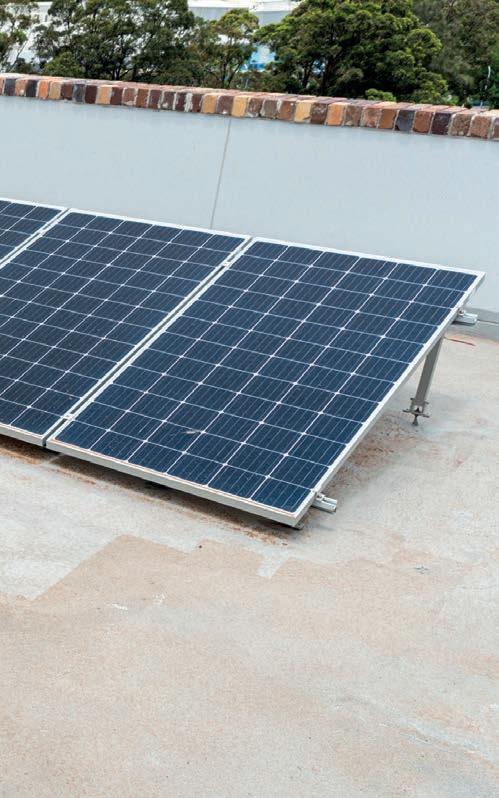
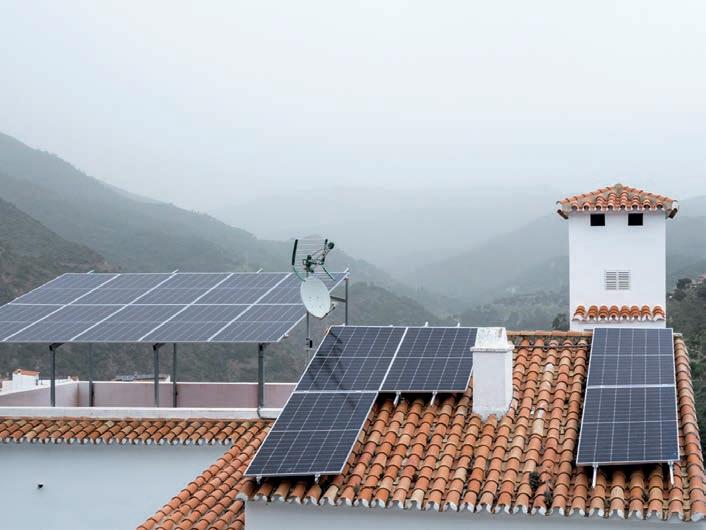
regulated expenditure, meaning customers across the entire network could end up subsidising benefits enjoyed only in trial areas. There is also a risk that regulated revenues might indirectly support contestable market activities if strict ring-fencing, accounting, and invoicing controls are not applied. The sandboxing route has been chosen to avoid the scrutiny of applying for a ring-fencing waiver and being required to reach a higher hurdle. This further undermines competitive neutrality and raises equity concerns for customers outside the trial zones.
Benefit distribution: The trial aims to support renters and low-income households, but it is unclear how dividends will be delivered in practice. If financial benefits instead accrue to landlords or property owners, the intended recipients may see little relief, complicating e orts to achieve equity objectives.
Dispatch Conflicts: Storage assets may be required to balance both network support and market participation. Without clear and enforceable priority rules, there is a risk that dispatch decisions could favour one use over another, distorting outcomes and undermining either system reliability or competitive neutrality.
Unclear Exit Path: Although the trial is positioned as temporary, there is no certainty about how the assets would be treated once it concludes. Without well-defined sunset clauses and exit conditions, there is a risk that trial assets migrate into the regulated asset base by default. This would e ectively convert a temporary waiver into a permanent shift in market structure.
Reporting and Compliance: E ective governance will be critical to managing risks and ensuring compliance. Without robust reporting templates, transparent disclosure, and ongoing monitoring, it would be di cult to demonstrate that the trial remains within its intended boundaries.
Weak oversight: Increasing the likelihood of unintended impacts, like autonomous path dependency, going unnoticed until they are entrenched.
The AER’s decision on Ausgrid’s application will be closely watched across the sector. For networks, the trial represents an opportunity to test new roles in the energy transition. For retailers and generators, it raises concerns about competition and the future boundaries of the market. For policymakers, it is more than a test of how to balance equity. It is a test of their commitment to e ciency and market integrity.
International examples such as Iberdrola’s Solar Communities show that inclusive renewable access can be delivered at scale through competitive markets. Local programs, from community solar farms to governmentbacked batteries, demonstrate that Australia has multiple pathways to address inequity. The Ausgrid trial will test whether risks blurring the lines that underpin the market’s design lead to a flourishing market in CPNs. The outcome will shape not only the future of sandboxing trials but also inform the broader debate about whether these short-term economies of scope lead to anything other than long term monopoly entrenchment.


With a bold new target set for 2035, Australia is working double time to keep emissions down, and the key to success lies in the timely delivery of the energy transition.
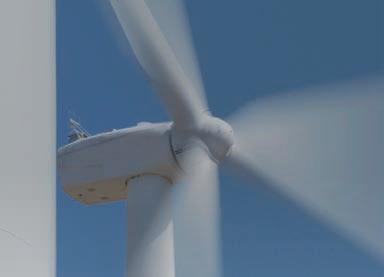





Australia now has less than five years to bring renewable energy up from around 40 per cent of our generation mix to 83 per cent by 2030. Delivering the reliable, renewable and a ordable energy system we need isn’t going to be easy, but with the help of new government subsidies and faster project approval times, we might just pull it o . To do this, the Australian Energy Market Operator’s (AEMO) 2024 Integrated System Plan (ISP) said Australia needs to renewable generation needs to increase by six times 2024 figures and roll out more 10,000km of new transmission projects. Rooftop solar, household batteries and electric vehicles (EVs) and other consumer energy resources (CER) are also going to be essential to not only
realising this goal, but also in ensuring the stability of our grids. The Federal Government is pulling out all the stops, grid-scale renewable generation, transmission and storage projects are getting the green light faster than ever, and the Cheaper Home Batteries Program has kicked o a CER frenzy, with 19,000 battery systems registered in the first month alone – and if we maintain this pace, Australia on track to more than triple the number of installations in 2024. With a huge pipeline of work to complete in the next four years there’s no room for delays. But, more projects means competing for parts, and increased demand is exacerbating supply chain bottlenecks, leading to longer procurement and lead times.
On top of all that, major renewable projects are often in remote areas, which makes transportation of essential parts all the more challenging.
The last leg is the hardest
The last-mile delivery process perhaps the most critical part of the supply chain, but often it’s also the most challenging – especially when it comes to energy infrastructure projects where precision, delivery speed and reliability are essential.
Grid-scale developments require some rather complex last-mile logistics, from getting oversized transformers and cables on-site to delivering components in remote or hard-toaccess areas.
In any construction site, last-minute changes and unforeseen problems can disrupt delivery plans, while unexpected hurdles and harsh weather can cause delays or damages to components, which increases costs and leads to project overruns. On the consumer side, with subsidies making batteries and solar PV more accessible to everyday Australians, many installers are booked out to the end of 2026. Any delay adds to a growing backlog of customers waiting to reap the benefits of the energy transition. The longer reputable installers keep households waiting, the more likely they are to fall victim to shady deals or be fooled into installing a non-compliant system.
To deliver our clean energy future, crews need the right parts, and they need them fast. But without clear visibility, however, the entire operation slows. Missing or misplaced parts trigger a domino e ect of rescheduling, increased overtime, additional freight costs and blown out project timelines.
When these teams are often already stretched thin by labour shortages, dealing with the consequences of poor inventory visibility wastes hours they don’t have. As the energy transition accelerates and demand on these essential crews increases, smart, e cient logistics will be crucial to supporting field technicians.
Droppoint CEO, Jason Flanagan, said that managing inventory centrally without an e ective last mile strategy leaves crews waiting for deliveries or driving hours just to collect inventory, and a lack of operational visibility
“Without clear insight into inventory status and movement, organisations are prone to unnecessary procurement, stagnant inventory, poor stock rotation and lost productivity due to time spent searching for items,” he said.
With net-zero targets looming large and a growing pipeline of infrastructure to be delivered, the stakes are higher than ever. Inventory gaps aren’t just inconvenient, they’re an obstacle the sector can’t a ord to ignore.
“We understand the operational realities the energy sector is facing, which is why we specialise in inventory and logistics solutions tailored for the people out on the field,”
Traditional inventory models based around static warehouses and rigid stock allocations are struggling to keep pace with the demands of today’s energy sector, and a new approach is needed.
For Droppoint, this means real-time visibility across all locations, from central warehouses to field vehicles; smart forecasting tools that position parts where they’re needed most; and seamless logistics that deliver quickly and reliably, no matter the location.
“This is the foundation of a responsive, resilient supply chain, one that is ready to lead Australia through its energy transformation, and Droppoint is helping businesses bridge the inventory visibility gap in the Australian energy industry,” he said.
Rather than relying on traditional inventory models that are centralised and inflexible, Droppoint is built around
As an expert in inventory and logistics solutions for field workforces, Droppoint partners with best-in-class carrier partners and storage providers to create custom logistics solutions to field service teams in the energy industry.
Parts can be delivered close to homes, worksites or one of the 500 conveniently located 24/7 Droppoint sites at any time, eliminating the need to travel to a central depot or between sites. This service is underpinned by Droppoint’s purposebuilt logistics software MOS (Material Orchestration System), which brings transport, inventory and location management together for a single source of truth.
“The energy sector faces the dual challenge of ensuring operational uptime while managing inventory e ciently. Droppoint excels where ERP (enterprise resource planning) systems often fall short, delivering e ective last-mile visibility for inventory tracking from its source, depot or vendor, to the point of use,” Mr Flanagan said.
Built by field service professionals for field service professionals, MOS is designed to keep the energy sector working, not waiting.
With real-time inventory visibility, reliable logistics and the support of Droppoint’s dedicated team, Australia’s energy sector is empowered to deliver a reliable, renewable electricity system today and a bright, sustainable future for the next generation.
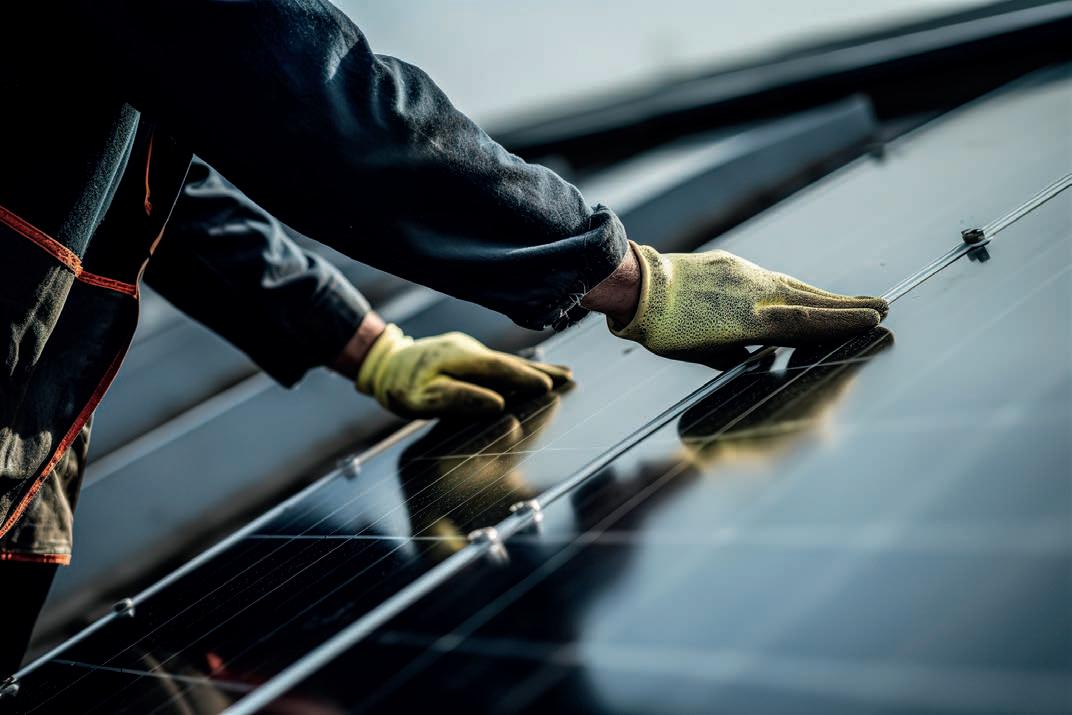
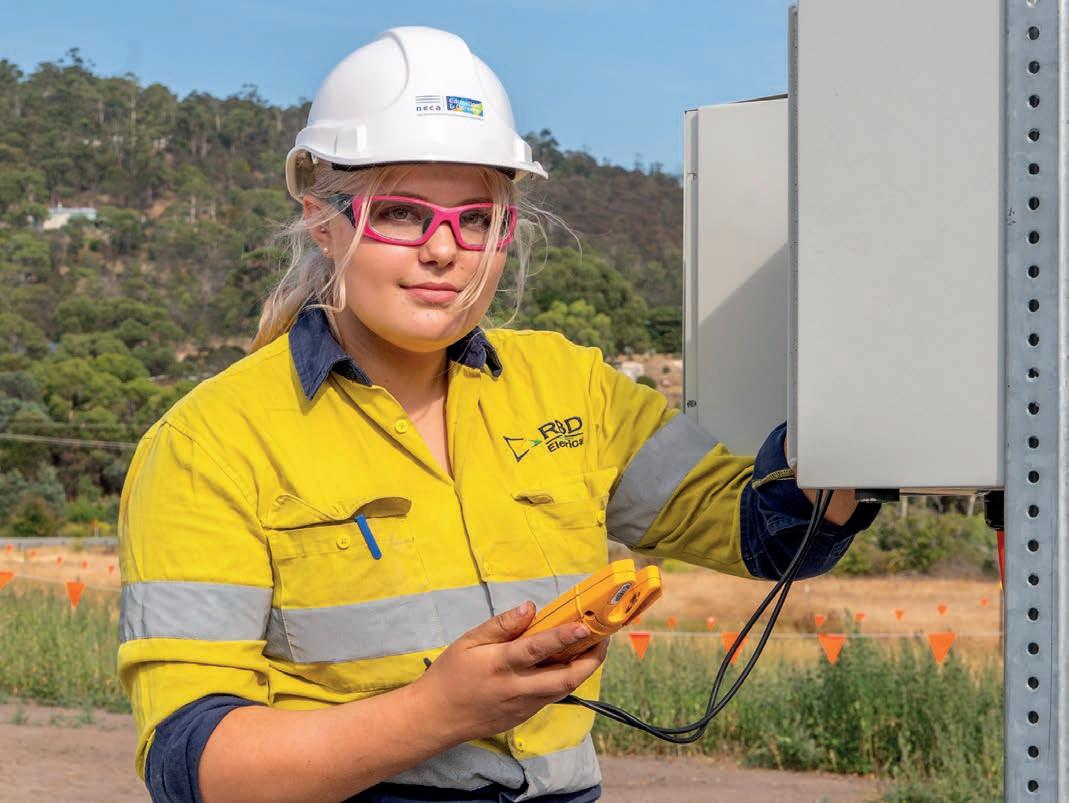
Australia’s energy sector is at a critical juncture.
The 2025 Powering Skills Organisation Workforce Plan reveals that job listings in energy trades have doubled over the past decade, yet apprenticeship completion rates remain at just 68 per cent.
This is a major concern, as the nation needs a significant influx of skilled workers to meet its clean energy goals.
A recent Jobs and Skills Australia report states that Australia will need 42,000 more electricians in the next seven years, and the clean energy workforce will likely need to grow to 84,000 by 2050. These numbers aren’t just for renewable energy projects, they’re essential to maintaining the broader economy while undertaking a domestic net-zero transformation.
In Victoria alone, 33 major renewable energy projects – including the Golden Plains Wind Farm and Portland Battery
Energy Storage System – are driving unprecedented demand for skilled electrical workers, particularly in regional areas.
Despite this critical need, women make up just three per cent of the energy trades workers in Australia. This underrepresentation is more than just a gender equity issue, it’s a significant barrier to building the skilled and inclusive workforce Australia needs.
To address these challenges, Future Energy Skills (FES) is leading a new project based on an inclusive gender equity apprenticeship model.
Funded by the Federal Government’s Building Women’s Careers (BWC) program, this is one of only ten large-scale projects selected nationwide. Its mission is to drive systemic, structural, and cultural change in the training and work environments critical for a sustainable future-energy workforce.
The strength of this initiative lies in its partnerships. FES is working with a diverse group of partners, each bringing unique expertise and reach.
This includes the Victorian branch of the National Electrical and Communications Association (NECA), a peak industry body providing essential resources and training to better equip electrical contractors.
Tradeswomen Australia is also involved, which advocates for gender inclusivity in traditionally male-dominated industries, o ering mentorship and networking opportunities for women in trades.
Similarly, Bendigo Kangan Institute provides vocational education and training tailored to the energy and technical sectors, equipping students with the skills necessary to succeed in an evolving energy landscape.
Other partners include TASTAFE, a leading Tasmanian provider of training and workforce development, The Busy Group, which plays a crucial role in supporting businesses with recruitment, apprenticeships, and traineeships, and MEGT, a national organisation focused on apprenticeship and traineeship services.
By ensuring the project is firmly grounded in industry realities, this network of partners form a robust and collaborative network dedicated to building clean energy workplaces that are not only sustainable, but inclusive and equitable for all.
Transforming the apprenticeship ecosystem
Over the next three years, the FES project team will collaborate closely with employers to support female apprentices undertaking the Certificate III in Electrotechnology Electrician, with a focus on electives in new energy technologies. This targeted intervention is designed not only to increase participation, but to reshape the apprenticeship ecosystem, making it more inclusive, future-focused, and responsive to the evolving demands of the clean energy sector.
To guide this transformation, the project is structured into four key stages:
Stage 1: applied research
The project begins with a gender impact assessment involving fully anonymised interviews to explore current workplace conditions, challenges, and opportunities for improvement.
Stage 2: co-design and implementation
Solutions will be collaboratively designed to support employers, apprentices, registered training organisations (RTOs), and apprenticeship connect providers. These strategies will be implemented in workplaces, with ongoing support provided to ensure successful integration.
Stage 3: review and refinement
The e ectiveness of the implemented solutions will be reviewed through feedback from employers, apprentices, and other stakeholders. Adjustments will be made based on real-world experiences to ensure the strategies remain relevant and impactful.
Stage 4: final evaluation
A comprehensive evaluation will assess the overall success of the project, identifying best practices and areas for further development.
To ensure the solutions are scalable and widely adoptable, the outcomes will be shared through toolkits, case
studies, and awareness campaigns. These resources will help embed gender equity into the culture of the clean energy sector – not just supporting a few women but reshaping the system itself.
The project is designed to deliver tangible, lasting impact. Key outcomes include:
•Increased female participation and retention in clean energy apprenticeships
•Encouraging and supporting change in workplace cultures
•Supportive ecosystems built through stakeholder collaboration
•Evidence-based solutions to reduce occupational gender segregation
•Improved visibility of clean energy careers for women through targeted campaigns.
These outcomes will not only benefit women, they will strengthen the entire industry by expanding the talent pool, improving workplace culture, and driving innovation.
The research phase of the FES project has been led by Dr Paula Fernandez Arias from Tradeswomen Australia, who is implementing a gender impact assessment to gather insights through confidential interviews with employers, apprentices, and industry stakeholders. These conversations are crucial to understanding the systemic and cultural barriers that prevent women from entering and thriving in electrotechnology trades.
The findings will guide the development of practical tools and
policies for employers and training organisations. This will benefit all workers and include anti-harassment policies, flexible work guides, employer mentoring frameworks, and tailored cultural awareness resources.
These resources will be made available online, ensuring easy access and scalability across the sector.
Training delivery through the FES project will be tailored to support women’s success. This includes flexible training plans, collaborative learning environments, and peer support networks – all designed to foster confidence, build community, and support retention.
But the transformation doesn’t stop at the classroom. The project is also engaging group training organisations (GTOs) and employers to adopt gender-neutral recruitment practices, inclusive workplace policies, and individualised career development plans for apprentices.
These changes aim to create respectful, supportive environments for all workers.
For electrical business owners or employers in the energy sector, now is the time to be part of a transformative initiative addressing both skill shortages and gender equity.
Join Future Energy Skills and its partners in shaping a more inclusive, skilled, and future-ready workforce.
Register your interest today at futureenergyskills.com.au/poweringwomen-into-clean-energy

As the energy industry decarbonises and shifts away from fossil fuels, Energy Networks Australia has identified the ready-made resource waiting to fill the gap.
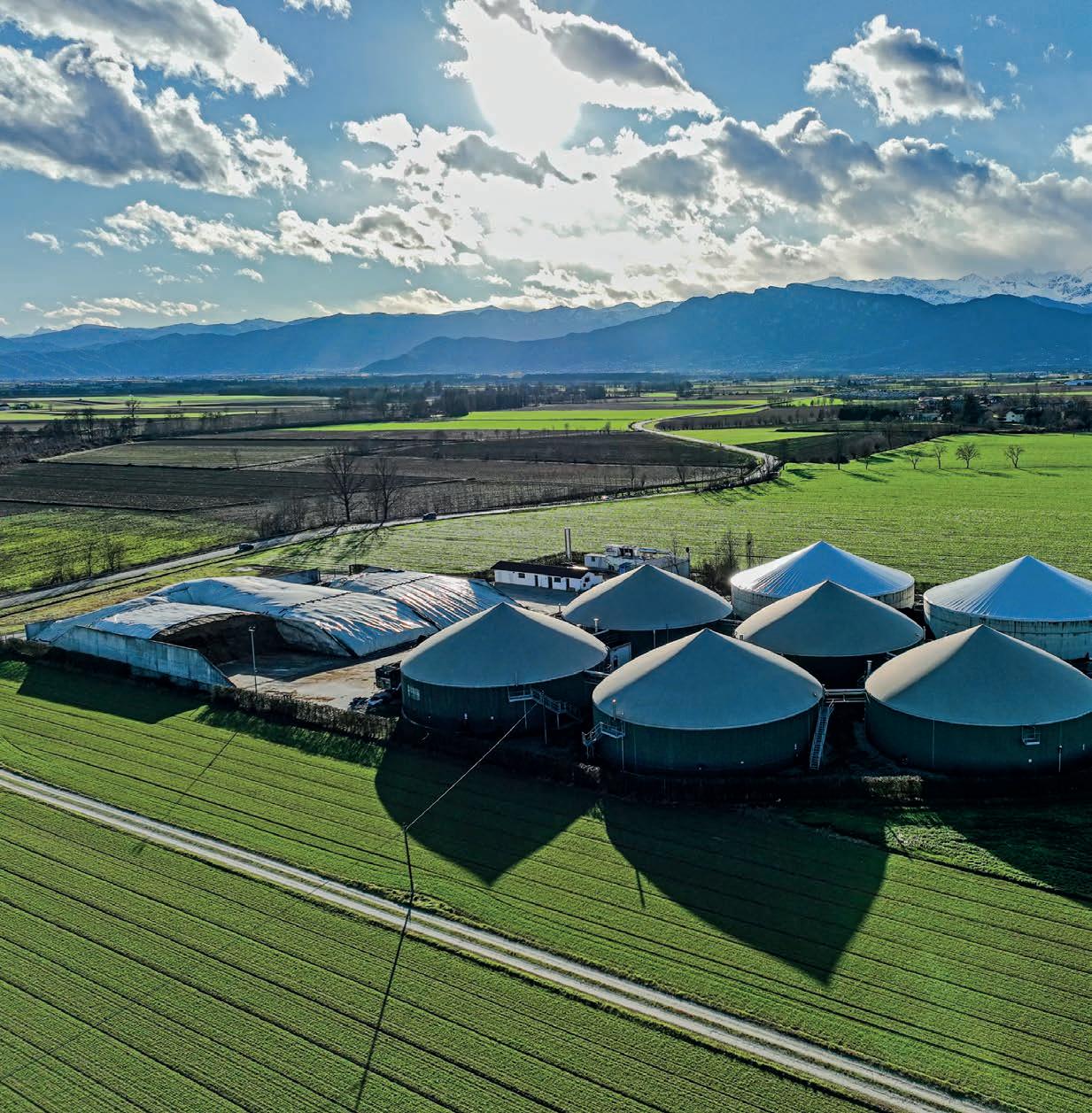
Renewable Natural Gas, or biomethane, could play a critical role in bolstering Australia’s domestic energy security, a new report from the Energy Networks Australia has found.
The report released by Blunomy and Energy Networks Australia (ENA) reveals biomethane could meet up to 96 per cent of current East Coast gas demand by simply tapping into current waste streams.
Biomethane Opportunities to Decarbonise Australian Industry finds
approximately 400 petajoules (PJ) of biomethane could be recoverable each year from existing feedstocks such as food and garden waste, agricultural residues and livestock by-products.
The renewable resource has the added advantage of being able to utilise Australia’s existing gas networks, allowing industries to decarbonise where electrification is not viable and overcoming the infrastructure lag of new power sources.
The ENA has developed the strategic document against an energy
background that found gas continues to have a key role to play as an energy source for many industrial and manufacturing processes. It found biomethane represents a practical and existing pathway to meet these energy needs, reduce emissions and overcome network obstacles with existing gas infrastructure.
The energy source also has the added benefit of enhancing waste management outcomes by converting organic waste streams into renewable energy, reducing landfill use, lowering
bring the price down and policy support
“This is not about waiting on emerging technologies – biomethane is here now, and we have the infrastructure to deliver it,” she said. “With further support, this solution could reduce emissions, divert waste and strengthen regional economies.”
“Importantly, the report shows the first 50 PJ of biomethane could be delivered at $10–27/GJ, with costs expected to fall further through supportive policy and improved recovery practices. Setting clear targets and policies to unlock this first portion of biomethane will provide critical learnings to understand how much of Australia’s industry could be powered by biomethane well into the future.”
The report found current bioresource potential in Australia indicates that volumes are significant, o ering a strong foundation for both biomethane and Low Carbon Liquid Fuel production. But while there is significant bioresource potential overall, not all feedstocks are suitable for every type of fuel or biomethane production.
“With further support, this solution could
recovery practices. Setting clear targets
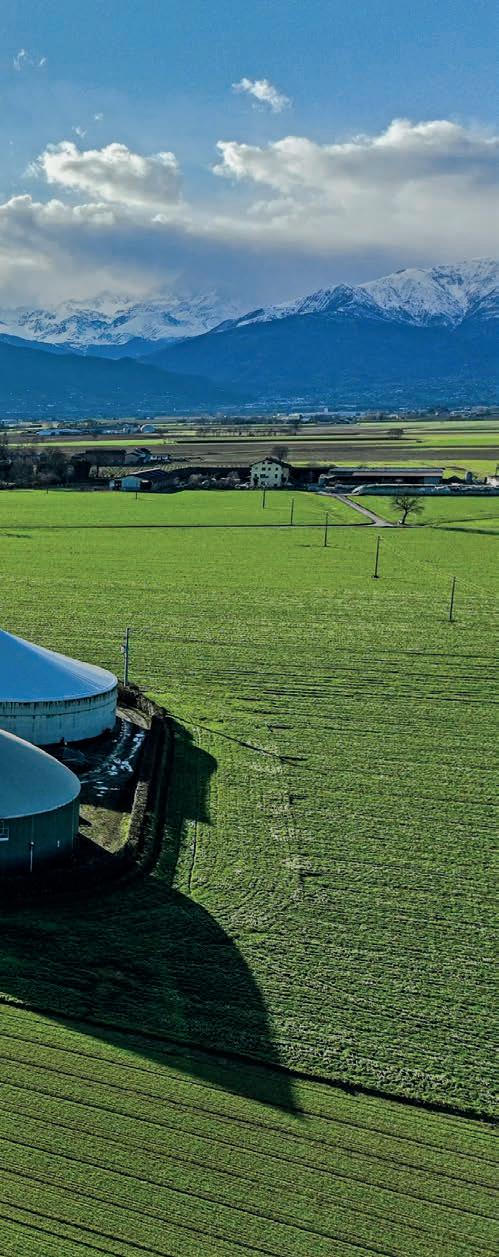
methane emissions, and supporting circular economy practices.
The ENA’s report also investigates how this could become reality with market development in Australia, increased feedstock volumes to bring the price down and policy support to make it a key part of the energy mix to meet 2035 emissions reduction targets.
ENA Chief Executive Dominique van den Berg said the findings highlight biomethane’s capacity now to be part of this energy future.
While biomethane is already a key part of decarbonisation strategies in Europe and North America, ENA is calling for Australian policymakers to seize the opportunity here with policies that will help bolster feedstock access and supply, which will help prompt further market development.
“Biomethane should be included in policies and schemes that support the decarbonisation of Australian Industry,” van den Berg said.
“It is already successfully being used in parts of the country including NSW where the Malabar waste facility generates enough renewable gas for more than 6000 homes.
“Simply expanding the Hydrogen Headstart Program and the Hydrogen Tax Credit Incentive Scheme to include biomethane would immediately create investment opportunities to put Australian industry on a path to a financially and environmentally sustainable future.”
The mapping in the report helps to distinguish between feedstocks with well-established, uncontested conversion pathways and those with multiple possible bioenergy applications. It maps feedstocks by source, stream, and bioenergy pathway, identifying the feedstocks that may become more valuable due to multiple use and the competition that may arise from this demand.
The findings highlight that Australia already has a diverse range of feedstocks well-suited to anaerobic digestion (AD) making biomethane a technically mature, low-risk solution. These include cereal residues, noncereal residues, sugarcane vinasse, livestock manure, horticultural waste, food and garden organics.
These are all sources that divert current waste, are digestible with existing technology and don’t compete with food production. The report notes however that as demand grows competition may arise for supply with the production of LCLF.
One of the strongest advantages outlined in the report is its potential ability to meet existing customer


demand for fossil gas through that network. Biomethane benefits from the advantage of direct distribution through existing gas networks, allowing it to reach current gas network customers e ciently without requiring significant new infrastructure or the delay new projects could entail. It also highlights There is also the potential to supply biomethane to new demands such as LCLF and power generation. This allows for its rapid deployment and cost-e ective transport from feedstock sources to end users.
Multiple purposes
Biomethane plays a complementary role to the future development and growth of low carbon liquid fuels. It shares synergies through shared infrastructure, co-products, and even serving as a direct feedstock input in some low-carbon fuel processes. The report argues these shared purposes strengthen the broader renewable fuel supply chain and enhance system-wide sustainability and e ciency.
Building the supply
One of the most significant areas for development is the potential to increase the technical feedstock for bioenergy through technical innovation, targeted policy support, and the use
of marginal land where they do not compete with food production.
Some of the areas for consideration are oily feedstocks like canola or tallow that could shift from export to local LCLF production, while new targeted crops may be developed and cultivated for specific bioenergy uses. Forestry waste is also listed as a potential area for supply growth.
A key plank of the strategy is for policy support from governments and other industry bodies for biomethane development and better feedstock access to foster lower production costs and make more biomethane commercially viable.
The report finds the cost of producing biomethane varies widely across projects due to di erences in scale, feedstock availability, infrastructure, local policy settings, and commercial arrangements, making it di cult to define a single representative cost value; this analysis therefore presents indicative cost ranges based on publicly available sources.
Biomethane’s production cost ranges currently from AUD $10 to $50 per GJ, depending on feedstock type. However, with the right policy support
and improved supply and market development these production costs could be reduced, the report found. It also predicts these developmental factors could combine to help produce the first 50PJ of annual supply at an estimated $10–27/GJ in 2030, $10–25/ GJ in 2040 and $10–23/GJ in 2050.
Over this period, advances in waste collection, processing technologies, and resource management, alongside enabling regulations, will unlock greater volumes of usable feedstock, improving both the economic and environmental viability of biomethane and fuel pathways.
Biomethane’s adoption across Europe, North America, and parts of Asia shows it is a successful and immediately deployable decarbonisation solution. The practicality lies in its ability to divert waste, reduce emissions, and integrate seamlessly with existing gas infrastructure.
The report concludes that with the right policy support and developments in supply and technology this in turn will bring down production costs, making biomethane an ideal and essential part of the energy mix for a future low-emissions Australia.
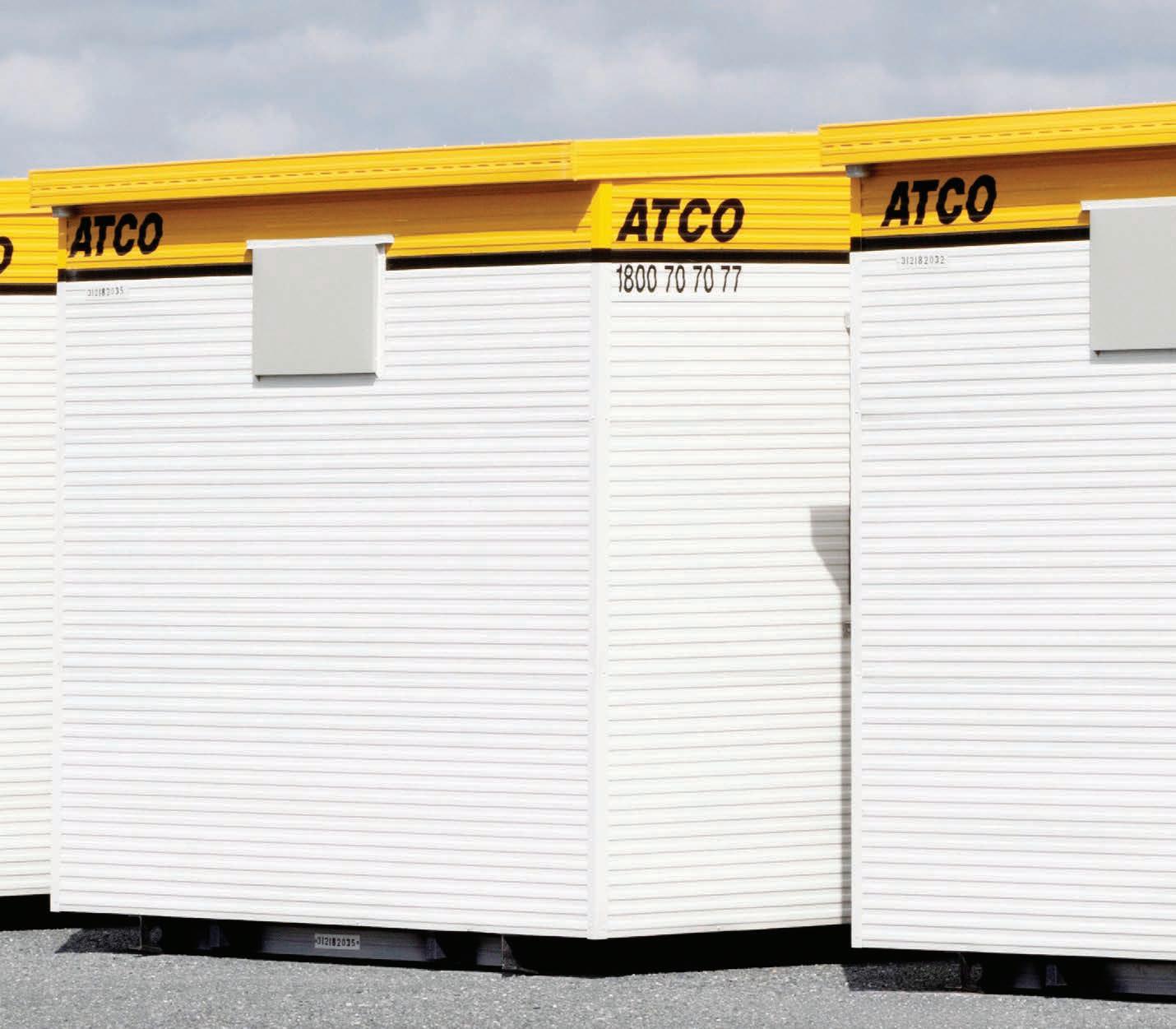


ATCO Structures has supported the Energy sector for more than 75 years with standarised modular building offerings ready for immediate deployment.
Call 1800 707 077 today to learn more about the benefits of modular construction and discuss your modular needs with team ATCO.
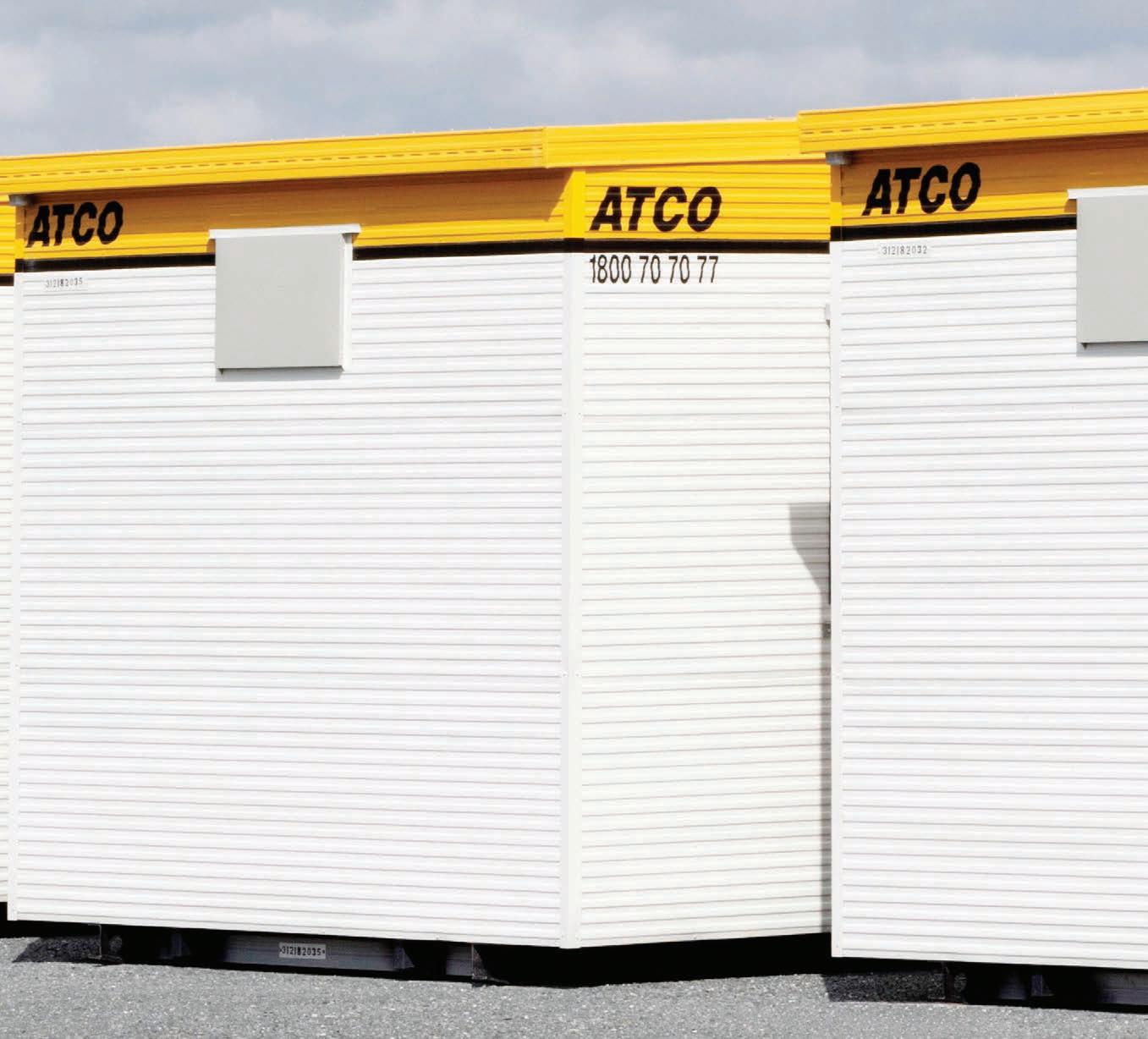



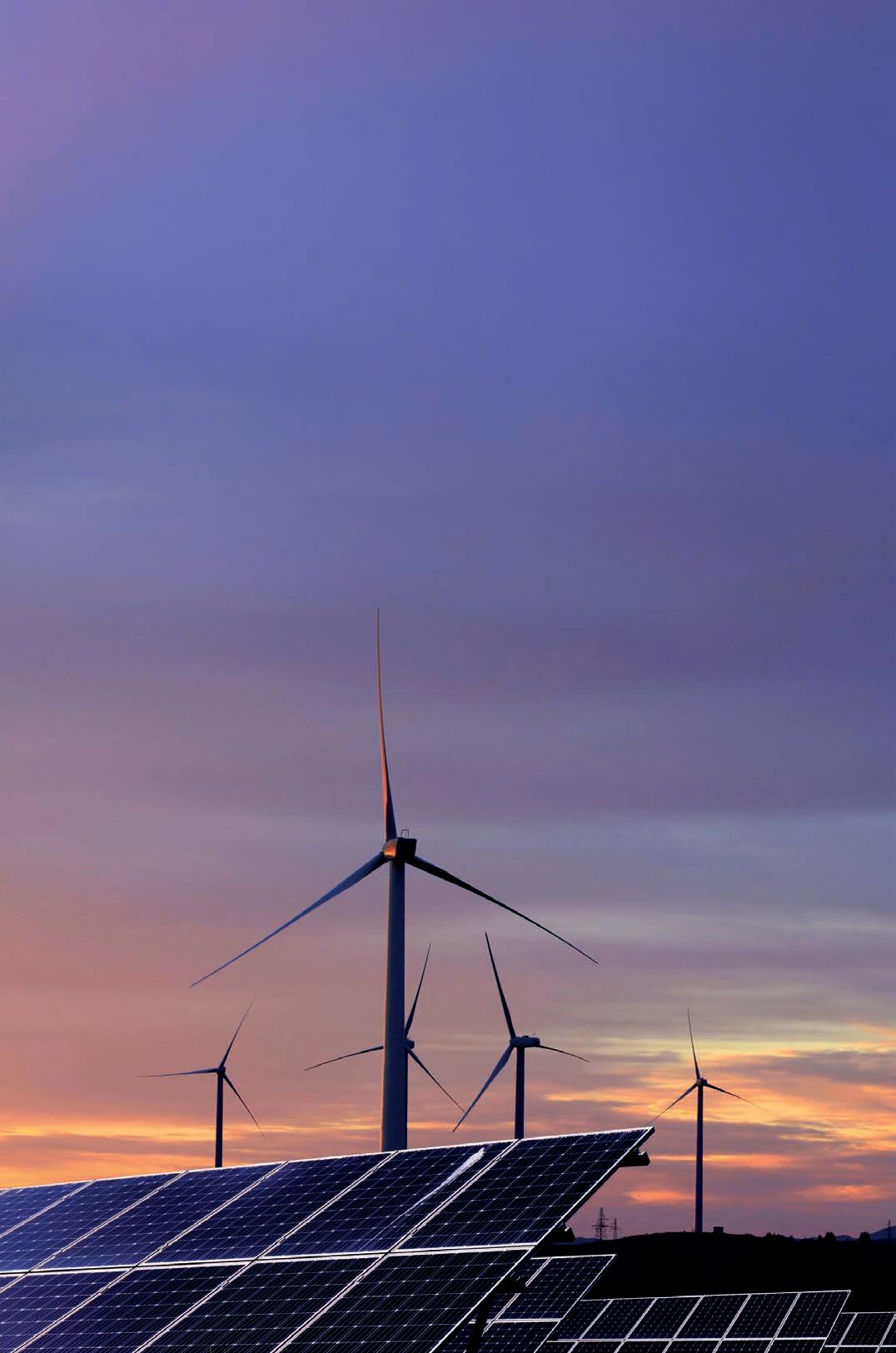
Renewable energy and electrification have been named as two of the five key planks in the federal government’s emissions reductions plan by 2035. Action on the proposal will help shape the future of the industry and the nation.
In September the Albanese government announced its next big step in acting on climate change.
On advice form the independent Climate Change Authority’s it has set Australia’s 2035 climate change target at a range of 62 per cent to 70 per cent reduction on 2005 emissions.
“This is an ambitious but achievable target – sending the right investment signal, responding to the science and delivered with a practical plan,” Prime Minister Anthony Albanese said.
“It builds on what we know are the lowest cost actions we can deliver over the next decade while leaving room for new technologies to take things up a gear.”
The launch outlined the five areas where the greatest gains in reductions could be made and the government’s first actions to back the plan:
1.Clean electricity across the economy with more renewable electricity generation, supported by new transmission and storage (including household batteries)
2.Lowering emissions by electrification such as the New Vehicle E ciency Standard that supports consumers switching to EVs and improving energy e ciency
3.Expanding clean fuel use by establishing a low carbon liquid fuels industry and supporting green hydrogen
4.Accelerating new technologies through Future Made in Australia investments, and innovation support through ARENA
5.Net carbon removals will be scaled up, enabling land holders to earn money for eligible carbon storage and a robust ACCU scheme
As part of the launch package the federal government also announced a group of initiatives it hopes will create further momentum in the transition to clean energy generation and clean energy use.
Key to the plan is the $5 billion Net Zero Fund in the National Reconstruction Fund, to help industrial facilities decarbonise and scale up more renewables and low emissions manufacturing.
The government will also inject $2 billion into the Clean Energy Finance Corporation to help lower electricity prices and a further $1.1 billion for the production of clean fuels.
On a more a basic consumer level it is also hoping $40 million to accelerate
the roll out of kerbside and fast EV charging including on existing electricity poles, will help advance the transition of the vehicle fleet. The funding will help identify suitable charging locations and new models to support deployment in black spots, such as regional areas.
There is also $85 million in funding to help households and businesses understand and improve their energy performance and a $50 million fund for up to 500 sports clubs with upgrades like better shade and drainage, batteries and energy upgrades to lower bills and climate-proof their facilities.
Clean energy generation will be a key part of meeting the emissions reduction targets by 2035 but what proportion of the equation is mandated is yet to be revealed beyond the government’s target of 82 per cent slated for 2030. The Climate Change Authority was more ambitious in its advice.
“Meeting even the lower end of the target range won’t be easy,” it notes in its summary. “It requires halving Australia’s current emissions levels and more than doubling Australia’s decarbonisation rate.”
It highlights in its advice a need for the continuing transition to a renewables-based electricity system to deliver around half the emissions reductions required to achieve the recommended 2035 target.
“As set out in AEMO’s Step Change scenario, for the NEM this requires accelerating the rate of transmission line installation and scaling up renewable generation and storage capacity, including six-fold growth in utility storage from around 3.5 to 22GW, quadrupling wind capacity from around 13 to 56GW, tripling utility solar capacity from around
9.5 to 26GW and doubling rooftop and distributed solar capacity from around 23 to 48GW by 2035.”
Despite the Climate Change Authority’s projection that more than 90 per cent renewables would be needed to achieve its recommended climate target by 2035, Minister Bowen has told media that a timeline for this renewables target beyond 2030 has not yet been set as part of the policy. Nevertheless, the energy sector and its transition look to be a major plank toward reaching the target.
The CCA advice highlights that the widespread electrification of household energy use will not only benefit these emissions reduction goals but also bring significant cost savings to consumers. It notes electrification and improved e ciency of transport and buildings can account for a further 11–14 per cent of required emissions reductions, contributing to the energy cost savings.
“Expert analysis by the Australian Energy Market Commission projects residential electricity prices will fall by 13 per cent (about 5c/kWh) and average household energy costs will fall by about 20 per cent (around $1,000/year) over the next decade under a coordinated renewables rollout. Households that fully electrify (by transitioning to electric transportation, appliances, heating, and integrating solar and battery storage) could potentially cut energy costs by as much as 70 per cent (AEMC, 2024). As well as saving money, the decarbonisation and growth of electricity production is a necessary pre-condition for the decarbonisation of other sectors.”
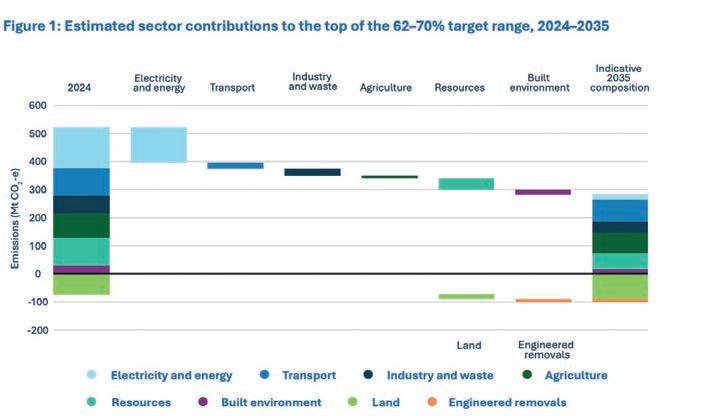
The government has spruiked its New Vehicle E ciency Scheme as one of the key policy platforms to promote the electrification of transport, particularly in private passenger vehicles. In more than a year since its announcement and its implementation of fleet polluting penalties since July 1, the NVES has led to more than 100 new models of EVs on Australia’s roads but the uptake remains slow, with new vehicle sales of EVs amounting to only about eight per cent of the total market and about two per cent of the national vehicle fleet.
The Climate Change Authority identifies this as one of the challenging areas in the transition.
“Realising the cost savings in the transport sector available on a 62–70 per cent pathway requires putting more than 20 times the number of battery electric passenger vehicles on the road than there are today. This means over
five million EVs that would otherwise have been petrol and diesel vehicles. Around half of all light vehicles sold between now and 2035 would need to be EVs.”
Despite these challenges, the Climate Change Authority’s advice to the government is framed in terms of what is achievable over the next decade and the significance it has in establishing a cleaner and prosperous nation for the second half of the century.
CCA Chair Matt Kean has highlighted the collective e ort need to meet these vital targets for posterity.
“Our analysis plots a course that is credible and marks one of the most ambitious tracks of any nation, especially in per-capita terms,” he wrote. “While the electricity sector will continue to lead the decarbonisation push, other sectors will need to step up to play their
important roles, setting themselves up to be more future-ready in the process. Just as the survival prospects of our glorious Great Barrier Reef and other coral reefs improve with every fraction of a degree of warming avoided, so must we seize every advance that innovation presents to meet or beat the higher end of our recommended target range. In doing this, we will also be serving our long-term interests by laying the foundations of Australia’s future prosperity and making the post-2035 race to net zero emissions by 2050 easier.
“Australia’s legislated 2030 target and now our proposed 2035 goal are waypoints on our decarbonisation journey. In summary, this report represents our moment to be bold, to do what’s right for the environment and the economy for generations to come, and to demonstrate what’s possible when we act together.”
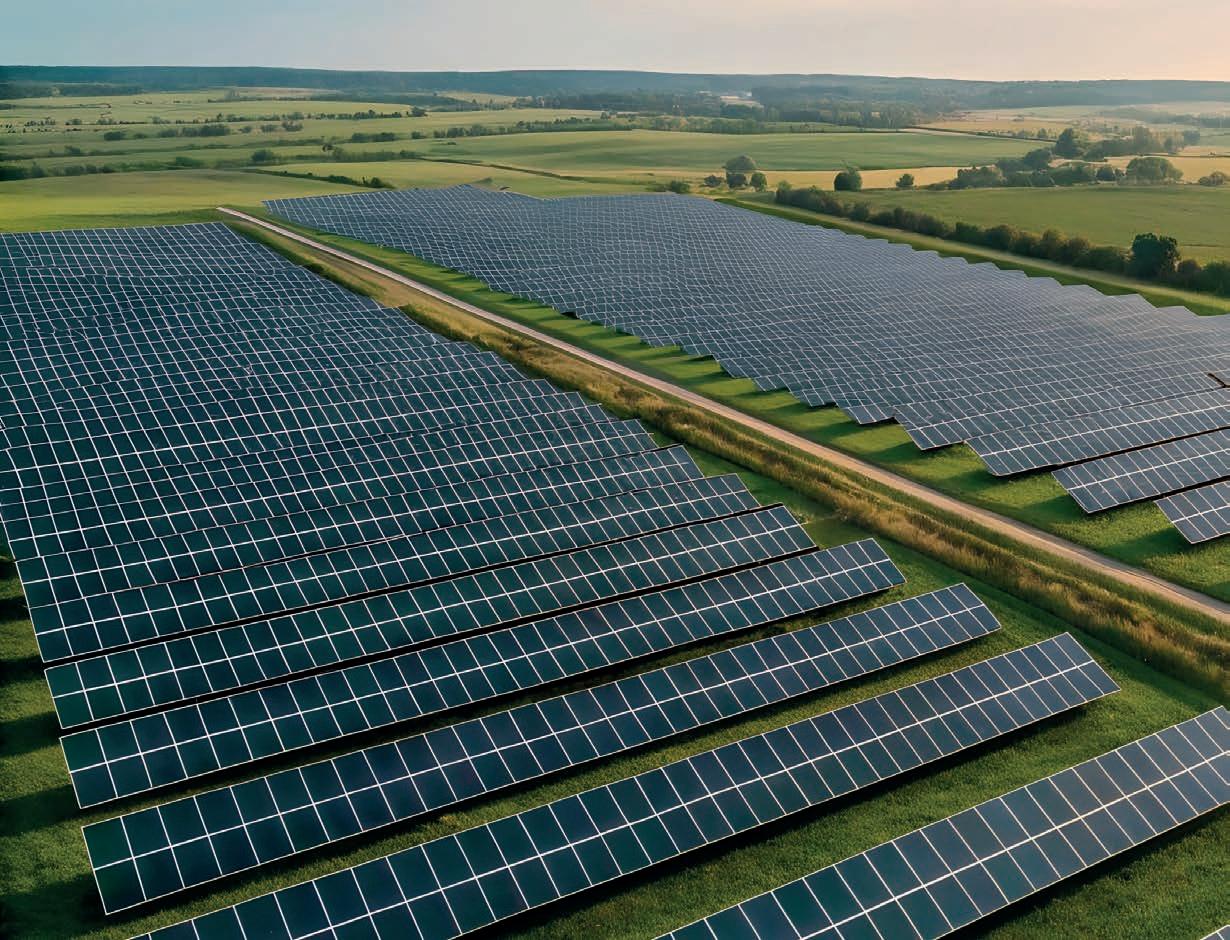
Solutions at scale
Climateworks Australia lead Anna Malos, who was a former Assistant Director at the Climate Change Authority says their research shows Australia has the technology and knowledge to meet and exceed its new target and replace the fossil fuels in the energy sector, the nation’s largest source of carbon pollution. These solutions now need to deployed at scale.
“Australia is already a global renewable energy powerhouse – with more than four million homes with solar power and momentum still building. The government’s new plan sets the foundation for accelerating the energy transition which is the bedrock for economic success. The next step is clear: turn plans into action.”
She says the $2 billion boost for the Clean Energy Finance Corporation will be especially important for helping industry and transport to access a ordable, renewable electricity.
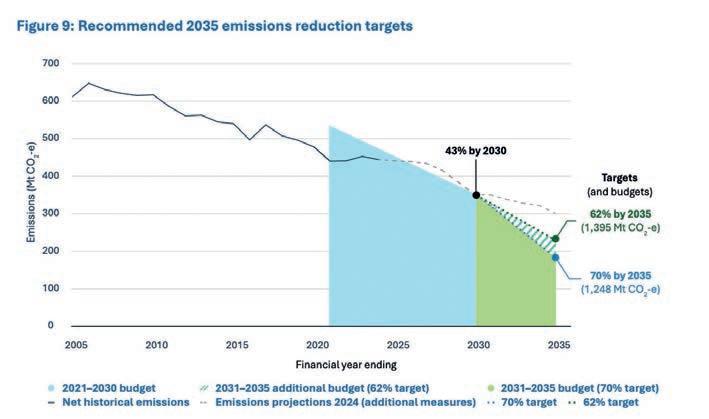
“With strong renewable foundations in place, the biggest opportunities now lie in how Australia uses energy to maximise benefits for consumers – to cut power bills, strengthen industries
and ensure the transition works for everyone. The plan’s increased focus on energy productivity and managing demand in homes and businesses is an important step.”


Delivering a rapid shift to renewables calls for a new way of thinking, but this goes beyond new technology. It’s also about empowering the engineers at the core of this monumental transition – and one team is already leading the charge..
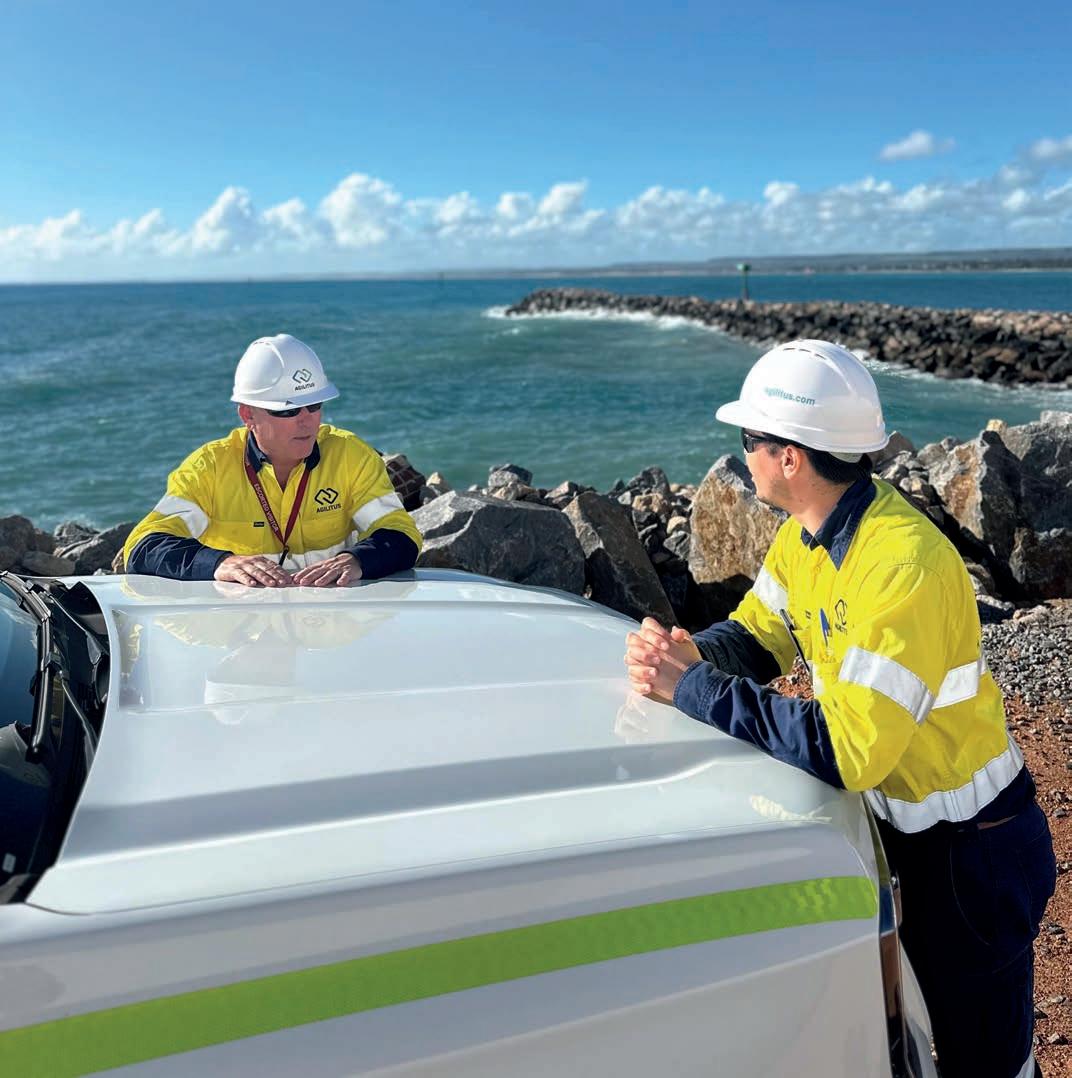
At the close of 2024, approximately 40 per cent of Australia’s total electricity generation came from a combination of renewable energy sources.
While this has almost doubled since 2020, the energy sector still needs to double this figure again in less than five years to meet decarbonisation targets and to satisfy the country’s growing demand.
According to Agilitus Managing Director, Craig Bloxham, projects need to go beyond a traditional engineering, procurement and construction (EPC) approach to achieve this – but what will really be fundamental to success is selecting engineers with a certain mindset.
“Success will be achieved from a
combination of early involvement of engineers and with clients adopting an integrated project approach,” he said.
“But more than anything, it’s working with engineers who are focused on removing ine ciencies and who challenge traditional engineering to drive fit-for-purpose innovative outcomes.”
Mr Bloxham said the only way to achieve this approach is by developing a high-performance workplace culture.
“Our culture is an unrelenting, deliberate focus on investing in our people,” he said.
“When people feel safe and secure in their work environment, they are empowered to deliver exceptional results.
“This goes beyond technical excellence. It’s about understanding our clients’ fundamental issues and solve complex challenges
“It’s a way of being for our team. Driving the energy transition for clients is a significant responsibility and one that we take seriously.”
In the 1990s, Mr Bloxham was fresh out of university and making his first foray into the industry when he met fellow graduate Tony Comerford – and the pair started their careers together at a large, well-reputed business in North Queensland. However, the company’s priorities shifted as it grew, and over time Mr Comerford and Mr Bloxham
saw that the core business elements needed for high-quality engineering services were beginning to fall away.
“We found was that it was actually becoming increasingly di cult to provide really good quality services,” Mr Bloxham said,
“Because with the corporatised approach to engineering and design you have to compromise, and the culture around decision making became very risk averse, and decisions were made by other parties who really didn’t truly understand technical work.
“It was just becoming increasingly di cult to do what we enjoy doing, which is to provide high - quality engineering design services and advisory services.”
Staying on the path of least resistance meant watering down their design values. So in 2017, while fishing at their favourite secret location in Western Australia, the duo decided to forge their own way ahead, and established what would eventually be known as Agilitus.
“We aspired to be medium sized, privately owned, and highly reputable with clear di erentiation of unpretentious, quality problem-solving engineering, design and project management,” Mr Bloxham said
“To achieve this, we understood how important building a united interdependent culture was to provide quality services based on strong customer service.
“So, we attracted the best people we knew in the industry, and then we built a culture where people felt safe and secure, while fostering teamwork, quick decision making, and solving problems for clients.”
For Mr Bloxham, culture is built on people.
“It’s how we show up for each other, the trust we create, and build an environment that cares, which is reinforced through our actions with each other and our clients,” he said. Agilitus’ vision is to be the most soughtafter global multi-discipline engineering business; attracting and employing the best people with like-minded values while working on projects that make a di erence to our communities.
For Mr Bloxham and Mr Comerford’s vision to work, culture must be more than a surface level
buzzword, rather it needed to be baked into recruitment, leadership development, ownership, and behaviour expectations across day-to-day operations.
“We look for people who deliver technical excellence, but what I’m really interested in, is how they lead and work with each other and clients,” Mr Bloxham said.
“We employ the most qualified people who have a mindset of listening and understanding client needs, being consistently reliable, and delivering value for money services.
“It’s very pleasing to hear the team say that Agilitus is a great place to work, because they feel like everybody’s out to find and help them be successful.”
While the value of building a strong culture is not new, Mr Bloxham is fighting the trend of the commoditisation of engineering services.
“To some, engineering has become a transactional service. We’ve found clients who value engineering as the foundation pillar for their project – who are willing to challenge convention, and this ensures there is no challenge too great to solve,” he said.
While the clean energy transition is complex, Mr Bloxham believes that’s even more reason why working alongside an engineering business with a culture of caring is fundamental to driving success.
“We can build this culture because we’re 100 per cent employee-owned. We’re all personally invested in the success of our business and its projects. This means we simply deliver engineering projects better,” he said.
Agilitus has now become one of the largest privately owned engineering businesses in Australia.
“How we care about our client projects is a very visible and tangible thing for clients,” Mr Bloxham said.
“Care is our fit-for-purpose approach providing certainty of outcome, constructability assurance, and safe execution. Care is being a collaborative partner that clients can rely on. It’s about focusing on what matters most to our clients, which is achieved through the provision of reliable, resilient and responsive services.
“We deliver this through reducing execution costs, lowering project risk,
improving safety, and maximising asset lifecycle e ciency. It’s achieved by being intrinsically aligned to client needs.
“This results in quality deliverables and value-for-money solutions to produce better long-term project outcomes. This approach is why many of our clients return to us time and again.”
he rea ener eren e According to Agilitus’s clients, the company’s point of di erence is its reliable, consistent quality customer service.
“We deliver this by building a multidiscipline team of permanent inhouse team members who are empowered and invested in our client’s success,” Mr Bloxham said.
“When we employ people, we always o er permanent roles because we want you to work for us to the day you retire. We see it as a journey through your whole career.”
For Mr Bloxham, all of this leads to stronger client trust.
Hitting 83 per cent renewable energy by 2030 will be a hard-won victory, but by working with engineers that care and invested in delivering solid outcomes, Mr Bloxham is hopeful that Australia will succeed.
“We find projects in the energy space are heavily invested in challenging conventions to deliver superior outcomes. That’s the space we work well in and can truly make a di erence. We have some exciting energy projects on the go and we’re continuing to take on new ones,” he said.
“The projects are very technical and complex, but because we back ourselves, we’re not afraid of them. We also do everything, from the front-end advisory work and independent peer reviews, to design, implementation and commissioning.
“And because we’re a widely capable we deliver engineering and design across all disciplines – with specialist capability in energy, geotechnical, rail, ports and marine and digital and AI capabilities.”
At the end of the day, Agilitus shows that a reliable, a ordable, renewable future isn’t going to be powered by new technology alone.
Tomorrow’s energy sector is only going to be as great as the people delivering it.
For more information, visit agilitus.com

Digital twins are redefining how Australia’s energy sector designs, delivers, and operates infrastructure – driving e ciency, trust, and compliance.
Australia’s energy sector is under pressure to deliver reliable, e cient, and sustainable infrastructure.
From renewable generation to grid modernisation, projects are increasingly complex, requiring closer collaboration and greater trust in the data that underpins every decision.
With this in mind, a critical solution is emerging. Digital twins not only improve project delivery but also support longterm operations, asset optimisation, and compliance with evolving regulation.
Governments are already shaping how the energy transition unfolds. Recently, the NSW Infrastructure Digitalisation and Data Policy (IDD) was released, demanding consistent, interoperable data across the asset lifecycle.
Autodesk Construction Cloud (ACC) helps meet this through a secure common data environment, collaboration tools, and ISO 19650-aligned workflows. Combined with Datum360’s strengths in asset data management, utilities can ensure high-quality, structured data flows into operations.
ACC reduces rework and improves collaboration, while Datum ensures compliance with metadata and governance standards.
The data challenge
Despite advances in digital delivery, many energy projects still rely on outdated and ill-fitted tools and manual processes. Many still use spreadsheets
to review deliverables and validate asset data quality.
At scale, this manual approach is ine cient and unreliable. Data is often siloed, incomplete, or inconsistent, and integration with enterprise systems such as SAP is patchy at best.
This sees teams burdened by the administrative work, spending hours validating spreadsheets, reconciling datasets, and spot-checking deliverables against attribute matrices.
Instead of providing clarity, the process fuels doubt, making stakeholders question whether they are working with the right information –every handover or integration becomes a potential risk point.
Without governance, data becomes a liability, slowing projects and creating uncertainty at a time when energy infrastructure demands certainty most.
This is where structured platforms make the di erence. ACC provides a secure common data environment that unifies design, construction, and field teams. By breaking down silos, it ensures every stakeholder is working from a single source of truth, reducing risk and improving accountability.
Building on this foundation, Autodesk Datum introduces enterprise-grade data governance, enforcing standards for metadata, classification, and naming conventions before information enters the environment. This not only improves confidence in the data but also ensures compliance with policy-driven
requirements for quality, custodianship, and interoperability.
Once data is structured and trusted, Autodesk Tandem brings it to life as a digital twin. With minimal e ort, Tandem federates information from ACC and Datum into a dynamic model that evolves alongside the asset. It can integrate with IoT sensors, SCADA and computerised maintenance management systems, giving operators real-time visibility, predictive maintenance insights, and a holistic view of performance over time.
For Australian energy companies, digital twins are more than just a technology upgrade; they represent a transformative shift towards policyaligned, interoperable systems that enhance operational e ciency, maintenance e ectiveness, and longterm sustainability.
By embedding platforms such as ACC, Datum, and Tandem into their operations and maintenance strategies, companies can not only meet emerging industry standards but also unlock the benefits of predictive maintenance. This includes reducing downtime, extending asset life, and improving system resilience, positioning them at the forefront of the nation’s energy transformation.
For more information, visit autodesk.com.au




20 - 21 NOVEMBER 2025

INTERNATIONAL CONVENTION CENTRE, SYDNEY

Gain strategic insights at the Hydrogen Summit
Access dedicated networking events throughout the event


With under a month to go until this landmark event, there’s not much time left to secure your place. Join global hydrogen leaders, pioneering innovators, and influential policymakers to accelerate the transition to a net zero future.
Discover breakthrough technologies at the H2 Tech Series
Develop international partnerships with delegates from Japan, Germany, China, Oman, France and beyond

Connect with over 100 world class suppliers
Build business relationships that will drive growth
Last chance to register. Don’t miss out on the industry event of the year.


Scan the QR code to register for a free Exhibition Pass. Want to experience the Summit? Use code APAC25PCM15 at checkout to save 15% on single Summit Passes.

WITH THANKS TO OUR 2025 SPONSORS AND SUPPORTERS













Bigger and better than ever, All Energy Australia promises to take on a particularly global flavour in 2025.
Record-breaking momentum in 2024 drew more than 14,500 unique visitors and a 94 per cent surge in international delegates to All Energy Australia and this year’s event promises to take that even further.
The October event will be driven by a bold theme: Australia’s rising influence in the global energy transition and the latest thinking and insight into how the nation can continue to adapt, innovate and be a leader in the clean energy space.
All Energy Australia 2025 will feature more than 30 session themes spanning grid tech, battery energy storage, solar, energy management, and EV technology and infrastructure.
With the federal government’s declared emissions reduction target by 2035 of 62-70 per cent, all eyes will be on the clean energy sector and how it can contribute.
This is why All Energy has a special place in bringing the best in clean energy ideas from Australia and across the world to an audience that is hungry to kick-start the accelerated transition to a cleaner and safer Australia.
The program opens with a plenary session and a high-profile panel mapping the future of home electrification. Speakers will examine replacing gas and fossil-fuel appliances with induction cooktops, heat pump water heaters, and reverse-cycle air conditioning. The discussion will unpack carbon reduction, e ciency gains, and the challenges of consumer uptake.
Just some of the confirmed speakers include Kerim Mekki, Renewable Energy + Storage Director, ANZ; Daniel Tait, Senior Program Manager at JOLT; Candice Hincksman, Manager of Demand and Energy Management at Energy Queensland; Rebecca Wilson, Head of Energy Business Solutions ANZ at Ampol; and Paula Savonen, Vice President of Communications at Kempower. Analysts from Rystad Energy and the Clean Energy Council are also scheduled.
There will also be special sessions on the massive contribution the
electrification of transport can have on these targets where sessions such as “How to build a scalable EV charging business” will address the operational hurdles of fast-growing charging demand. Organisers say the rise of EVs is creating urgent requirements for reliable charging networks and viable business models.
Exhibition Director at All Energy Australia Robby Clark has tracked the growth of the industry leading expo since 2016 and is excited by the momentum and growing reach of the show.
Clark took it on himself to expand All Energy Australia’s international reach.
“We’ve proactively grown our international presence,” Clark said. “That means attending events like Intersolar in Munich or Smart Energy Week in Japan and saying, ‘Australia is an important place for you to do business.’ The pitch has become easier. With high rooftop solar uptake, growing battery storage, and strong policy backing, Australia o ers a combination
of technological appetite and realworld application.
“No one’s going to fly across the world to exhibit unless there’s business to be done, and there is – Australia is a hotspot,” Clark said.
“Now All Energy is truly international. More countries are coming. More manufacturers are launching products. The growth is only accelerating.”
Beyond the ground-breaking technology on show, Clark said the sense of shared purpose is what draws global players in.
“There’s a real appetite for the energy of the future here. It’s become very clear, even politically, that the public backs renewables,” he said. “We have geography on our side – lots of land, lots of sun, lots of rooftops – but we also have the right market conditions.”
n t first
Another important element of the show its focus on people power and how community backed projects play a vital


role in the transition to clean energy. In 2024, sessions on community energy, Virtual Power Plants (VPPs) as well as a full-day First Nations Energy program delivered to packed audiences.
“It used to be that when someone said ‘VPP’ you had to explain what it meant. Now it’s just part of the language,” he said.
“We’re seeing what was theoretical five years ago become reality,” Clark said. “I’ve seen community batteries being installed in my suburb. I walk past EV chargers on the street near my o ce. And when we run a VPP session now, it fills a 260-seat room. A few years ago, we were lucky to get 80.”
Batteries are booming
“Battery storage now has the strongest product representation on the show floor,” Clark said.
“Go back four or five years ago and it was all solar PV. Now, BESS dominates. It’s on every second stand.”
The scale has also changed.
“It used to be small units drilled onto walls. Now we’re craning in full container sized storage systems,” he said.
“Companies are dividing their stands between residential and industrial battery systems – it’s 50/50 now.”
This reflects a wider market trend. While residential storage remains crucial, large-scale batteries are fast becoming
essential to grid stability – especially as more renewables come online.
Beyond batteries and EVs, All Energy Australia is also expanding in areas like grid integration and energy e ciency. In partnership with the Energy E ciency Council, the event includes a growing dedicated zone and education theatre for smart energy management – crucial as the grid strains under the weight of new connections.
“We’ve got all this fantastic new renewable energy coming online,” said Clark. “But the grid we’re plugging it into isn’t always fit for purpose. So we’re seeing more exhibitors and conference content focused on grid technology, consultants, and solutions providers.” This aligns with the show’s steady move from pure renewables into the wider energy ecosystem.
As Clark said; “It’s not just about generating clean energy – it’s about managing and distributing it intelligently.”
Clark said one of the events strengths is its practical, real-world atmosphere combined with an open and insightful approach to the bigger questions facing the energy transition.
Policymakers, regulators and financiers are all part of the event’s
opening plenary sessions, where national and state-level agendas are discussed openly.
“We’ve always had strong support from the Victorian Government, which makes sense given the event’s home base,” said Clark.
“But we also get great representation from other states, especially around Renewable Energy Zones and largescale project updates.
“It starts at that macro level, but it always comes back down to product, delivery, and people on the ground. That’s what makes it valuable.”
This includes the invaluable ability to explore and discuss ideas and technology on a face-to-face basis in an increasingly online world.
“Trade shows are about face-toface interaction. It’s about touching a product, hearing an expert, having that conversation you didn’t expect to have – whether it’s over a co ee, in a session, or on the expo floor,” Clark said.
“That serendipity is what drives connection.”
It is also what helps bridge the gap between intention and execution.
“This industry is moving fast. Events like this give people a chance to stop, reset, and go deeper – to learn, network, partner, and come away with real momentum.”
Horizon Power’s 12-month trial in Exmouth has successfully demonstrated the viability of vehicle-togrid technology in stabilising the grid.
The trial took place in Exmouth, where Horizon Power conducted a range of tests exploring the future possibility of using V2G energy flow to power homes, reduce power bills, and stabilise the electricity grid.
The results clearly demonstrated that V2G technology has the potential to manage the two-way flow of energy from EVs charging and discharging into the power network, while ensuring stability and reliability.
Horizon Power will use the findings of the trial to inform the development of products that will allow customers to get more from their EVs than just getting them from A to B. This could include helping them to power their homes or even earn money by feeding energy back to the grid.
The trial was the first of its kind in Western Australia and was conducted using the regional energy provider’s (DERMS Distributed Energy Resource Management System).
DERMS used data from Horizon Power’s power systems, connected solar, the EVs and weather forecasts (predicting the availability of solar energy), to successfully balance power system stability with customer needs.
DERMS is already used to ease electricity grid capacity constraints, enabling more regional households to connect rooftop solar.
Horizon Power Acting CEO, Krystal Skinner, said the V2G trial is a major step forward in the utility’s customer-led decarbonisation journey.
“[It] enhances our understanding of how energy flow from EVs can be incorporated into our microgrids, especially in regional and remote towns,” she said.
“Having already proven e ective in removing hosting capacity constraints so that more Horizon Power customers in regional Western Australia can access rooftop solar, our DERMS is now proving capable of supporting future EV integration at scale.”
“This trial is a shining example of our commitment to innovation and collaboration with our regions, supporting a resilient, scalable energy future.”

Vehicle-to-grid is becoming a way to capitalise on high and low demand periods.
As part of the Western Australian Government’s Electric Vehicle Action Plan, the trial has enhanced Horizon Power’s understanding of how energy flow from EVs can be incorporated into its microgrids, especially in regional and remote towns.
Western Australian Energy and Decarbonisation Minister, AmberJade Sanderson, said the success of this regional trial in Exmouth is an important milestone in the state’s clean energy transition and in testing the technology that could make two-way charging a possibility in Western Australia.
“The findings confirmed for Horizon Power that its technology can manage EV charging and discharging intelligently, helping it to keep the grid stable while paving the way for flexible, customer-led energy products,” Ms Sanderson said.
“Electric vehicle batteries are powerful. As well as helping to stabilise the grid they have the capacity to power homes and reduce energy bills.
“The success of this trial sets a strong foundation for EVs to be integrated into our power systems.”
As Horizon Power develops DERMS, EVs have the potential to draw power from the grid to charge but also feed power back into the network when
needed – for example, when demands for energy are at their peak or when the flow of energy in the system needs to be stabilised.
Horizon Power partnered with the Gascoyne Development Commission, Shire of Exmouth, Exmouth Chamber of Commerce and Industry, and WA Country Health Service, providing them each with a V2G-compatible Nissan Leaf EV and V2G smart-charging equipment for the trial.
Gascoyne Development Commission, Acting Director, Amanda Willmott, said she was proud to have been involved in the trial.
“For small communities like this to be doing something so progressive, that’s incredible,” she said.
Shire of Exmouth President, Matthew Niikkula, said the shire is extremely proud to have been part of this 12-month trial.
“The integration of EV energy flow into microgrids marks a forwardthinking step toward smarter, more sustainable energy systems,” he said.
“The Shire of Exmouth has a strong commitment to innovation in our regional community, and this trial paves the way towards a more environmentally sustainable energy future.”
Challenges like aging infrastructure, grid modernisation, climate change, regulatory compliance, and handling vast amounts of data can strain the resources of electric utility providers.
What’s needed are advanced software solutions that enhance reliability, efficiency, and safety—and prepare utilities for the continued evolution of the energy sector.
Autodesk solutions include robust infrastructure design and management tools, integrated GIS capabilities, real-time monitoring and analytics, asset management throughout the lifecycle, and support for sustainability initiatives. They also make it easier for you to collaborate, ensuring seamless communication and coordination across projects.
Vault for utilities: Enhance electric utility operations with Autodesk Vault, streamlining workflows, improving collaboration, and securing design and engineering data from concept through maintenance and upgrades.
Digital project delivery: Connect people, data, and processes in a cloud-based environment. Work anytime, anywhere. Reduce errors and distractions, improve data access, and gain complete oversight.
BIM for utilities: A comprehensive, intelligent platform for planning, designing, constructing, and managing power utility projects, tailored for the electric utility sector.
Digital Twin: Optimise utility operations by integrating real-time data, enhancing grid reliability, efficiency, and resilience, reducing downtime, and improving service quality for better infrastructure management.
Learn more autodesk.com.au
Data is the key to unlock greener, leaner operations that improve profitability and build resilience to fluctuating market forces.
Better
Reduce

The Hunter-Central Coast Renewable Energy Zone (REZ) project has secured planning approval from the New South Wales Government.
The State Government said it is fast tracking the state’s first REZ that upgrades existing grid infrastructure such as distribution poles and wires. This approach will reduce the impact on communities and the environment.
The network upgrades, which will enable 1GW of network transfer capacity, include upgrades to existing distribution lines and the construction of two new substations.
According to the New South Wales Government, projects like the HunterCentral Coast REZ are key to its energy plan. Right now, around 36 per cent of New South Wales’s electricity comes from renewable sources.
It said that the projects the State Government has backed already will move the state more than two-thirds of the way to its 2030 renewable energy generation goal, and about 40 per cent of the way to its 2030 long-duration storage target.
Full planning approval was achieved following the exhibition of the review of environmental factors and a review of submissions by councils, state authorities, businesses and individuals.
The Hunter-Central Coast REZ network infrastructure has been assessed as having a relatively low environmental impact, as most of the works are taking place on existing easements.
EnergyCo Chief Executive, Hannah McCaughey, said that fast-tracking the Hunter-Central Coast REZ project is part of EnergyCo’s plan to keep the lights on for everyone in New South Wales, while providing tangible benefits to Hunter communities and their economies.
This sentiment was echoed by Ausgrid CEO, Marc England, who said that finalising the Review of Environmental Factors marks a significant milestone toward delivering upgraded network infrastructure that supports clean, reliable energy for the Hunter–Central Coast region.
“Ausgrid is committed to working closely with landowners and local stakeholders as we enable a lower cost transition that reduces the impact on our communities,” he said.
Ausgrid has committed to addressing the Review of Environmental Factors feedback, which included priorities such as jobs, support for local businesses and procurement, protection of visual amenity and
environment, community benefits, e ective tra c management and ongoing community engagement.
The New South Wales Government said that the REZ is forecast to create an average of approximately 590 direct jobs per year in the local area during construction, including roles for engineers, electricians and labourers. Ausgrid is committed to prioritising jobs and skills training, local procurement and Aboriginal business participation.
The project is now subject to final approvals from the Australian Energy Regulator.
New South Wales Minister for Climate Change and Energy, Penny Sharpe, said the planning approval for the Hunter-Central Coast Renewable Energy Zone project is further evidence of progress on a key upgrade that will help keep the lights on as coal-fired power plants retire.
“Upgrading existing distribution poles and wires allows us to minimise the impact on communities and the environment, and speeds up the delivery of this critical infrastructure,” she said.
New South Wales Minister for the Hunter, Yasmin Catley, said the HunterCentral Coast region has always been a powerhouse for industry and innovation and now it’s taking a bold step forward into the clean energy future.

“Fast-tracking the Hunter-Central Coast Renewable Energy Zone is about more than just new poles and substations, it’s about delivering a ordable, long-lasting energy while creating good jobs, supporting local businesses and protecting our communities and environment,” Ms Catley said.
“By upgrading existing infrastructure, we’re minimising disruption, maximising benefits and ensuring our local communities are at the heart of the state’s renewable transformation.”
New South Wales Minister for the Central Coast, David Harris, said that this important milestone in the development of the Hunter-Central Coast Renewable Energy Zone project is good news for communities in the Central Coast and Hunter.
“The REZ will help ensure a reliable and sustainable energy future for our regions.”
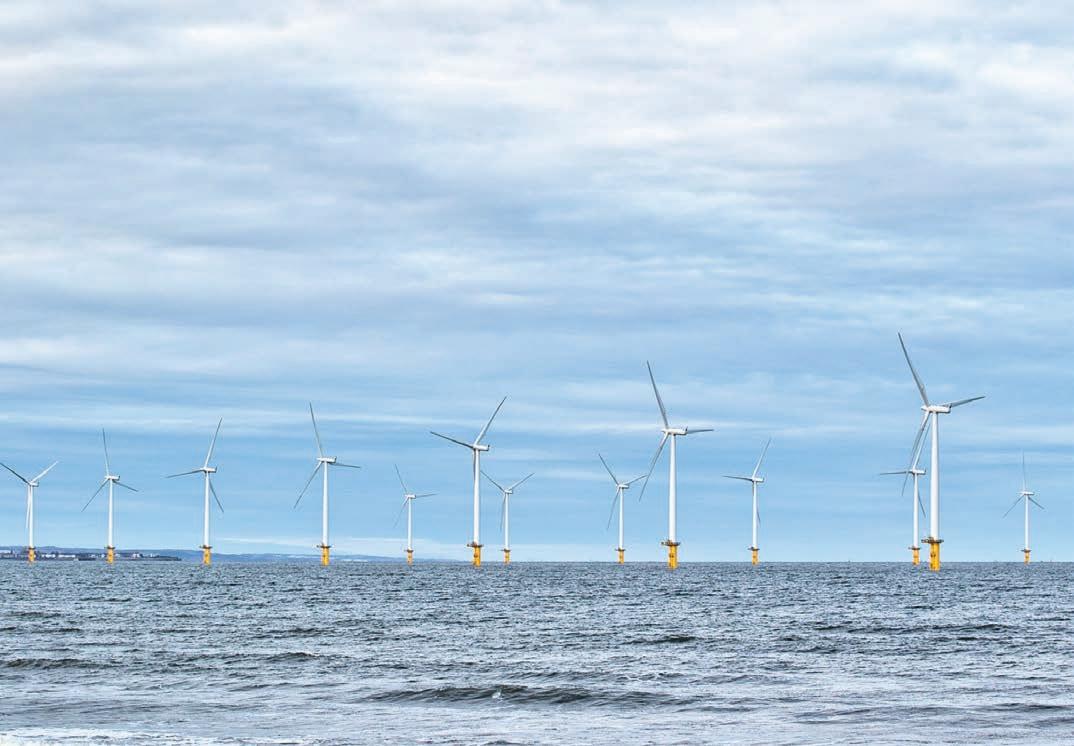
The long road to major o shore wind projects may have got a little bit shorter with the Federal Government planning to cut financial burdens and red tape.
The government says that in the context of the global challenges facing o shore wind, fees risk becoming a barrier to investment in Australia.
To provide temporary financial relief over the next two years, the government will seek to waive annual levies applied to feasibility and research and demonstration licences. It also plans to halve annual levies applied to transmission and infrastructure licences.
The government also plans to reduce application fees for research and demonstration licences from $300,000 to $20,000. Application fees for transmission and infrastructure licences will be reduced from $300,000 to $150,000.
The Federal Government said it is also easing administrative workloads with simpler financial and reporting requirements – matching reporting requirements to the nature and scale of activities being undertaken.
While it said that lower capital requirements under the new streamlined approach will also remove significant investment hurdles for o shore wind developers, the Federal Government said it will still demand best practice community engagement schemes for potential projects –striking the right balance between development and social licence.
This new industry support builds on draft guidelines released in August 2025 to encourage o shore wind research and demonstration projects.
Federal Minister for Climate Change and Energy Chris Bowen, said cutting red tape would help developers focus their time and funds on projects.
“The Federal Government is cutting fees and red tape while continuing to demand best practice community engagement for potential o shore wind projects. These cuts to fees, capital requirements and red tape make Australia a better prospect for investment and regional job creation,” Bowen said.
“We want to make it easier for developers to build an Australian
o shore wind industry, create thousands of great long-term jobs and generate cleaner, cheaper power for millions of homes.
“We recognise that the industry currently faces economic pressures and we are acting accordingly with temporary relief.”
According to the Federal Government, offshore wind projects currently in development off the coast of Australia could generate a total of 24.21GW – enough to power nearly double Australia’s total housing stock. Combined, these projects could create more than 15,000 construction jobs and 7500 ongoing roles.
Bowen said he has also made preliminary decisions to o er feasibility licences for projects o the coast of Bunbury, Western Australia that could add another 4GW and employ more than 2500 workers during construction and another 1000 ongoing jobs.
This temporary financial relief is available across all six declared o shore wind zones.
As Australia’s energy landscape undergoes rapid transformation, the supporting infrastructure must evolve to keep pace.
The Kiewa Valley BESS (Battery Energy Storage System) is a successful example of the seamless integration of renewable energy particularly solar and wind – into an aging and capacityconstrained grid.
The collaboration between Beca and Trina Solar is designed as a 500 MW/1GWh storage solution with a 330kV transmission connection to the AusNet Dederang Terminal Station (DDTS), the project will not only store renewable energy but dispatch during peak demand periods.
At full capacity, that’s enough electricity supply to approximately 700,000 households for up to two hours. By stabilising the grid and enabling greater integration of renewables, it aims to lower energy costs for Victorian communities over time.
This project is an example of how engineering foresight and strategic collaboration can overcome industry challenges while setting a new standard for grid-ready energy solutions.
Addressing the most ress n ha en es
With increasing reliance on solar and wind, the need for scalable, reliable storage solutions has never been more urgent. Yet, delivering these projects is far from being straightforward.
The Kiewa Valley site presented a complex mix of constraints: agricultural zoning, wildfi re risk, and proximity to pre-existing transmission infrastructure. Beca developed a solution that met technical and legal criteria requirements, laying the groundwork for future, risk-mitigated project stages.
Recognising the need for earlystage clarity, Trina engaged Beca to develop a concept design that would allow timely input and approval from AusNet. The collaboration focused on key elements like the transmission connection, network capacity availability and electrical balance of plant, enabling development of
preliminary equipment specifications for the BESS.
This also informed key inputs into the Development Approval and Generator Performance Standards workstreams, two critical path activities in project development. This proactive approach significantly de-risked the project for Trina, enabling a faster, more confident investment decision.
A key challenge was overcoming constraints along the transmission route, including existing overhead transmission lines entering DDTS, private property and underground services.
Beca’s proposed solution had to consider minimising impacts to:
• Operation and maintenance of the existing transmission line
• Clashes with underground services
• Vegetation clearing.
In addition, Beca’s deep understanding of the Victorian transmission network and longstanding relationship with AusNet, allowed them to leverage the right information for Trina to develop a technically acceptable solution that balances cost against performance.
Strategic engineering as a erent at r
This wasn’t a case of engineering in isolation. It was an example of how technical due diligence and strong collaboration early in the
project development lifecycle is crucial to assessing project viability before committing to significant development funding.
Beca’s concept design has been used to inform the Development Approval submission by Trina as part of the required planning and approvals process, as well as enabling early-stage Generator Performance Standards studies to commence with the Australian Energy Market Operator (AEMO), as part of the grid connection process.
A scalable model for the ener trans t n
The Kiewa Valley BESS is more than a successful project; it’s a replicable model for how Australia can meet its renewable energy targets. It shows that with the right expertise and a collaborative mindset the sector can overcome legacy constraints and deliver infrastructure that is both futureproof and investment-ready.
As Australia continues its journey toward decarbonisation, projects like Kiewa Valley will play an essential role in shaping an energy grid that is resilient yet responsive to evolving demands. Through leadership in innovative engineering solutions like this one, firms like Beca can play a strategic role in driving progress in the renewable energy sector.





















Some of the recent personnel changes in the energy sector.

Transgrid
Transgrid will farewell one of the energy industry’s most experienced executives, the utility’s Executive General Manager of Network, Marie Jordan, set to retire at the end of 2025.
Ms Jordan played a pivotal role in Australia’s renewable energy transition and grid reliability and her departure marks the end of a 40-year career in energy.
Australian Energy Market Operator
Following a distinguished 30-year career, AEMO EGM System Design, Merryn York, has retired and Nicola Falcon has taken up the torch in her former role. Kirsten Rose also joins as AEMO EGM Western Australia & Strategy.
AGL
Matthew Currie has been welcomed as AGL’s new Chief Operations and Construction Officer, leading the Energy Assets business unit; while David Moretto has been appointed as Chief Commercial Officer and will lead the Energy Markets and Development business unit.
They replace outgoing AGL COO, Markus Brokhoff.
Origin Energy
Origin Energy has appointed former Woodside and Fortescue senior executive, Fiona Hick, and former AGL and Snowy Hydro senior executive, Stephen Mikkelsen, to its Board as independent Non-executive Directors.
Clean Energy Council
Jackie Trad was appointed as the new Clean Energy Council CEO, replacing Kane Thornton.
Energy Networks Australia Energy Networks Australia has promoted Head of Networks, Dominic Adams, to Chief Operations Officer. Adams has more than a decade of experience working across the energy supply chain, with particular emphasis on policy and regulatory engagement with market bodies.
Powerlink Queensland
After five years at the helm, Powerlink Queensland Chief Executive, Professor Paul Simshauser, has announced his retirement from the role.
During his five years at the helm, Prof Simshauser helped return Powerlink to a high growth environment, harnessing its world-class power system
planning skills to help guide the market transformation.
Smart Energy Council
Nigel Morris was appointed Chief Strategy Officer on 1 September 2025. David McElrea was appointed Chief Advocacy Officer. These appointments reflect a strategic shift in leadership.
Snowy Hydro
After more than 40 years, Snowy Hydro Chief Operating Officer, Roger Whitby, has retired. Whitby’s journey with the organisation began in 1984 – when it was still known as the Snowy Mountains Hydroelectric Authority.
Snowy Hydro said since then he’s been part of the heart and soul of Snowy – and a true legend whose vast technical knowledge, leadership and calm presence have earned him the deepest respect.
Western Power
Former Western Australia Under Treasurer and current Western Power Deputy Chair, Michael Barnes, has been appointed as the new chair for Western Power.
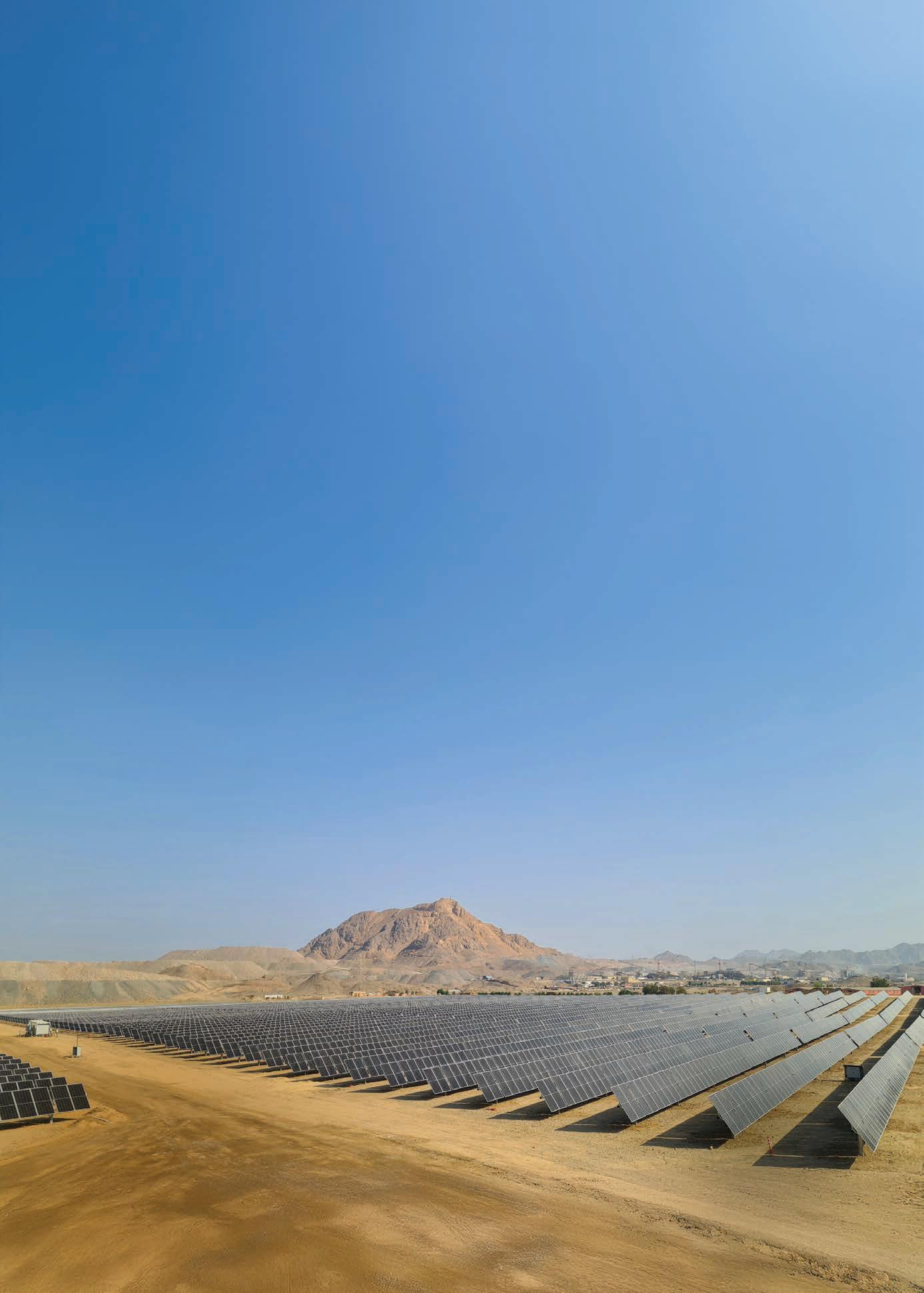





We are completing our all-in-one package –with the Fronius Reserva.
Our new battery storage system provides even more independence, more security, and more control. Scan here to find out more
















